Marcel Proust’s In Search of Lost Time is a monumental meditation on memory, time, and the subtle threads that weave our personal and collective histories. Through involuntary memory—famously evoked in the madeleine scene—Proust reveals how the past resurfaces in the present, how identity is shaped through recollection, and how the smallest details can unlock entire inner worlds.
In many ways, my 8-year project echoes these themes. By returning to my family’s hometown in Northern Italy, I’ve been engaging in my own search for lost time—connecting with relatives, unearthing forgotten stories, and working with the very materials and molds that shaped the world of my grandparents and parents. The ceramics, the local factories, and the fading artisanal knowledge all serve as tactile vessels of memory—each piece a kind of madeleine, holding traces of the past that continue to echo through me.
This project has become both a personal and artistic excavation, revealing how history is not something we leave behind, but something we carry in our bodies, our traditions, our gestures. As I manipulate clay that once passed through my grandfather’s hands, I’m not just creating objects—I’m reconstructing a lineage, reclaiming a story, and forging a space where memory, matter, and identity intertwine.
- TitleIn Search of Lost Time
- Type(s)
- Agenda
- Year(s)2010–2024
- LocationVeneto (Italy), New York (USA)
- ReferencesGiuseppe Penone, Jannis Kounellis
Grey Period 2010
The loss of so many loved ones caused me to consider the many forms of death that colored my daily life. I quietly watched the elderly as they walked the streets of New York—where I lived at the time—and observed their age-chiseled faces.
I questioned the and the idea of life after death while making my meals, cutting and cleaning or . Viewing the pink tinged , I thought of the raw, inflamed color that the skin takes on with age. Walking through markets in Chinatown and seeing stacks of by , I visualized the decomposition of flesh.
Following the death of my beloved grandmother Bertilla, I felt a sudden need to visit her home in Italy, a place that—at that point—I had never traveled to before. In that one visit, I met family members that I had never even heard of. I took as many pictures as I could, cherishing these as memories for the future. I wasn’t sure that I would ever see any of them again.
Back in New York, I began to paint. Still reeling from so much loss and reflecting on the insurmountable distance between myself and this newfound family—a distance not unlike the absence of death—my compositions rebuffed an idealistic or even naturalistic lens. Rendered in a limited palette, these paintings function as memento mori—Latin for “remember you must die”—depicting the living as though they were recently passed.


Dina, Oil on Canvas, 2013


Title: Maria's Hands
Medium: Oil on Canvas


Title: Giorgio
Medium: Oil on Canvas


Title: Maria
Medium: Oil on Canvas


Title: Bruno
Medium: Oil on Canvas


Title: Irma
Medium: Oil on Canvas


Title: Carmina
Medium: Oil on Canvas


Title: Igida
Medium: Oil on Canvas
These paintings draw upon the symbology of depictions of the death of Christ, a reference point taken from my Roman Catholic upbringing, and use techniques pioneered by Italian old masters, including verdaccio and simple compositions from the neck up. In an associated series of photographs, I documented my life during this period—the colors of the sunset, heaped carcasses drying out under the midday sun—a reflection on morbidity and the processing of loss.




Title: Gianni
Medium: Oil on Canvas


Title: Osvaldo
Medium: Oil on Canvas


Title: Flora having tea
Medium: Oil on Canvas


Title: Peirina and Luiza
Medium: Oil on Canvas
White Powder, White Stone, 2017
References: Giuseppe Penone, Jannis Kounellis
Drawing on memories of the Venetian stories that my grandparents told me as I grew up, this collection of sculptures collide elements of the narratives as if trying—and failing—to recreate the same arc.
I produced this collection in my family’s ceramic factory in Nove, Italy—a small town between Venice and the Dolomites where my grandfather was born. Drawing on memories of the Venetian stories that my grandparents told me as I grew up, this collection of sculptures collides elements of the narratives as if trying—and failing—to recreate the same arc. The attempt to bring back my grandparents’ voices, to remember those stories exactly as they were, is as futile as turning dust back into stone.


Coming to Nove, I felt that I had emerged into Bertilla and Onorino’s stories, somehow even more fantastical for all of the land’s layered memories: the WWII bullet holes that mark the factory walls; the passion flowers that climb the walls inside my grandmother’s childhood home. The place was real all along, but now it was my time to find adventure. In a sense, this was my grandparents’ last gift to me—an end turning into a beginning.
Each work is based on stories or images of Italy that Bertilla and Onorino told me as a child.
Firefly
In Firefly, a tower-like form sits on a wooden pedestal, surrounded by small lights. As a child, my grandmother Bertilla would catch fireflies in a jar and use this improvised light to run through the fields at night. Many years later, when I first came to Nove, I visited the house that she grew up in. As the sun set, I looked into the abandoned structure and found it full of fireflies, like something out of imagination. In the sculptural installation, the chimney at the center of the lights refers to the hearth as a place for sharing warmth and stories.

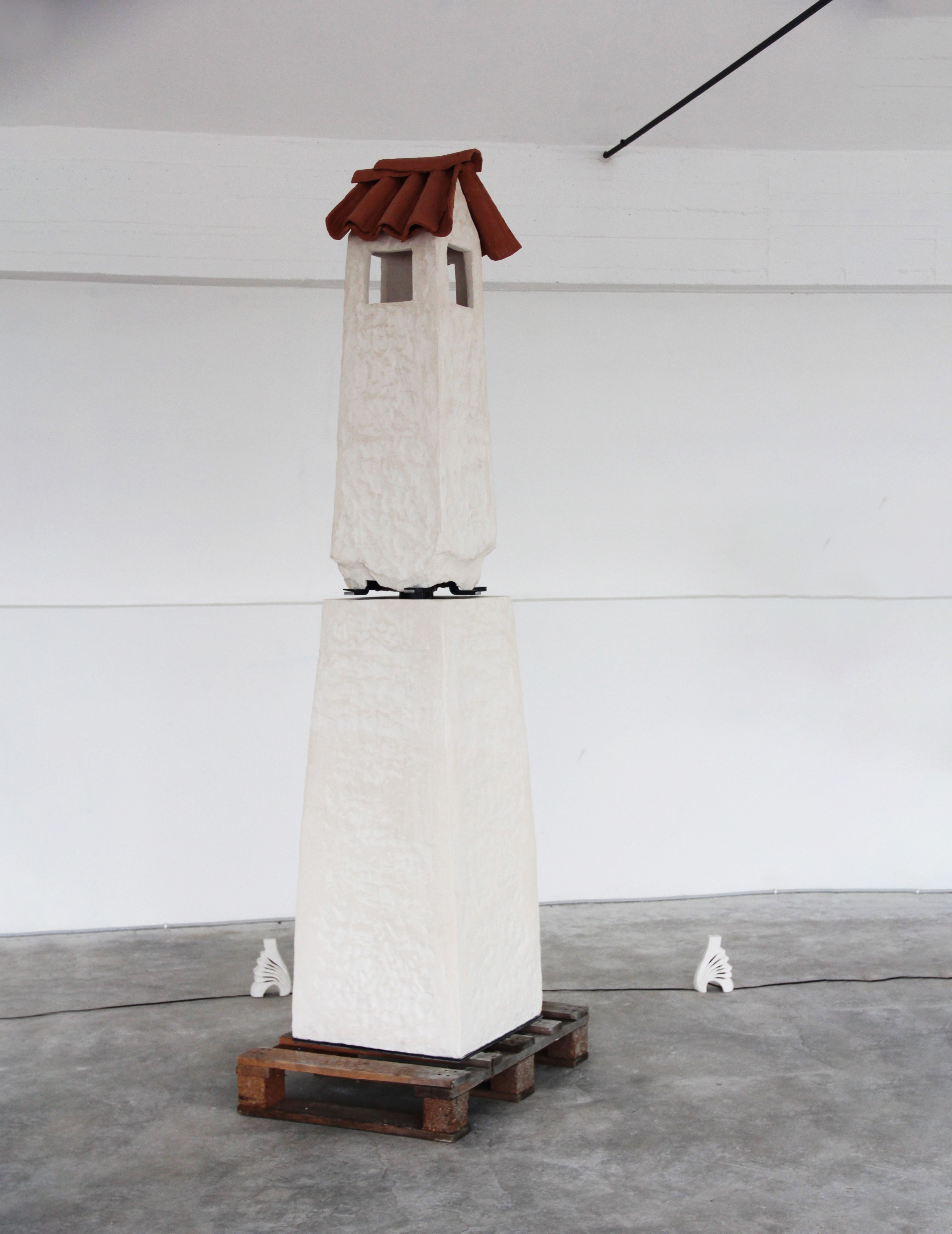
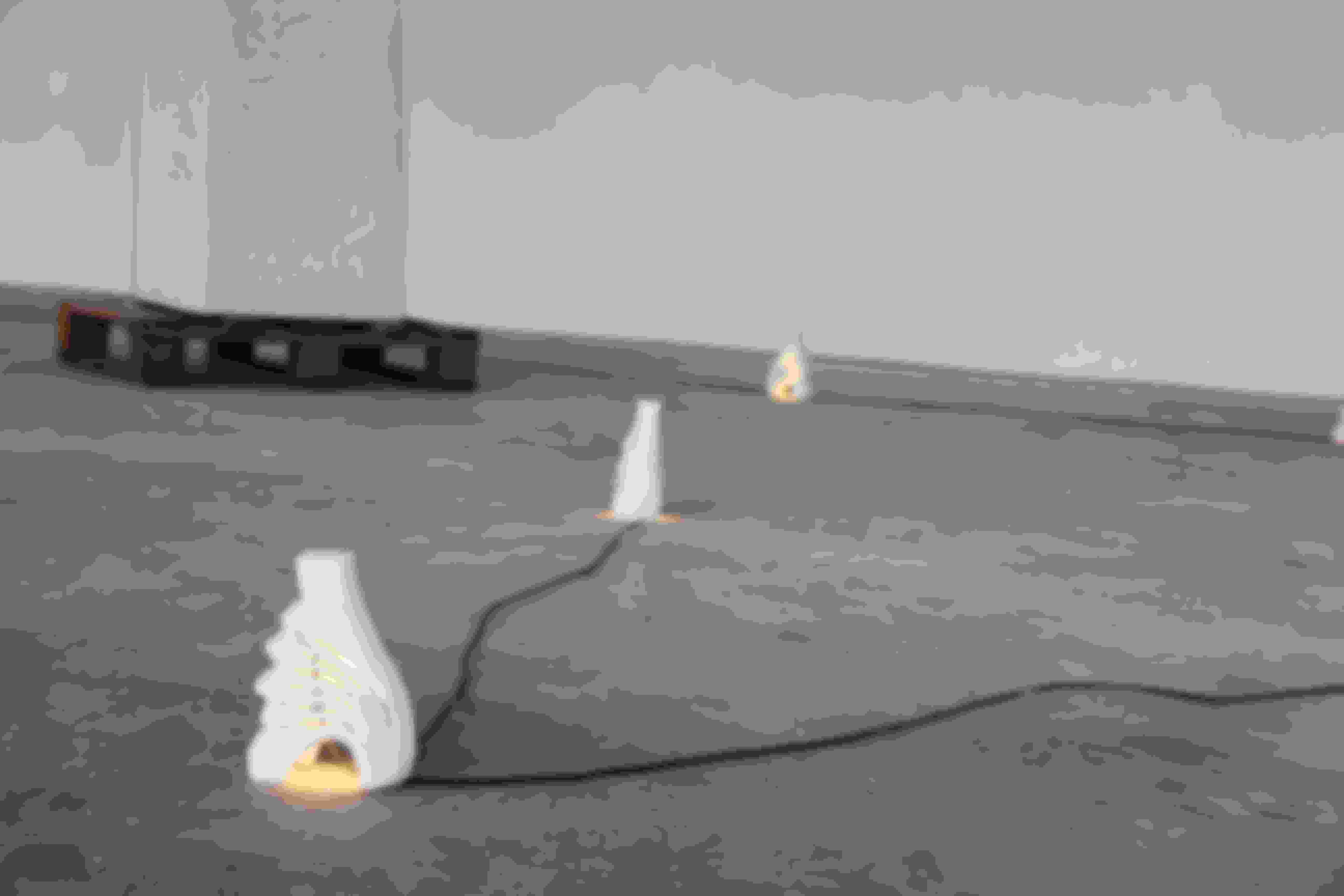

When Bertilla was young, she would help with household chores like washing the laundry in the nearby river, scrubbing and cleaning the sheets in the shallows. One day, she misjudged the current and the river tore the cloth from her hand, sweeping it swiftly downstream. I like to imagine that the sheet fled fish-like all the way to Venice and the sea. River Fish recreates this narrative, perforating a piece of fabric, painted with natural black powder mixed with rabbit skin glue, with fish-like scales and tethering it in the stream behind my uncle’s ceramics factory in Nove.




Curtain sketches the contours of a window frame in thin metal rods and cloth. Before they married, Onorino would bicycle an hour to visit Bertilla in Breganze. When they said goodbye again, Bertilla would run up to her bedroom window—which faced the direction of Onorino’s hometown, Nove—and would wave her handkerchief as he rode off. Every so often, he would look over his shoulder to see her still waving. This piece reconstructs this image with fabric from Bonotto, a fabric factory founded in 1912 and based in Breganze.









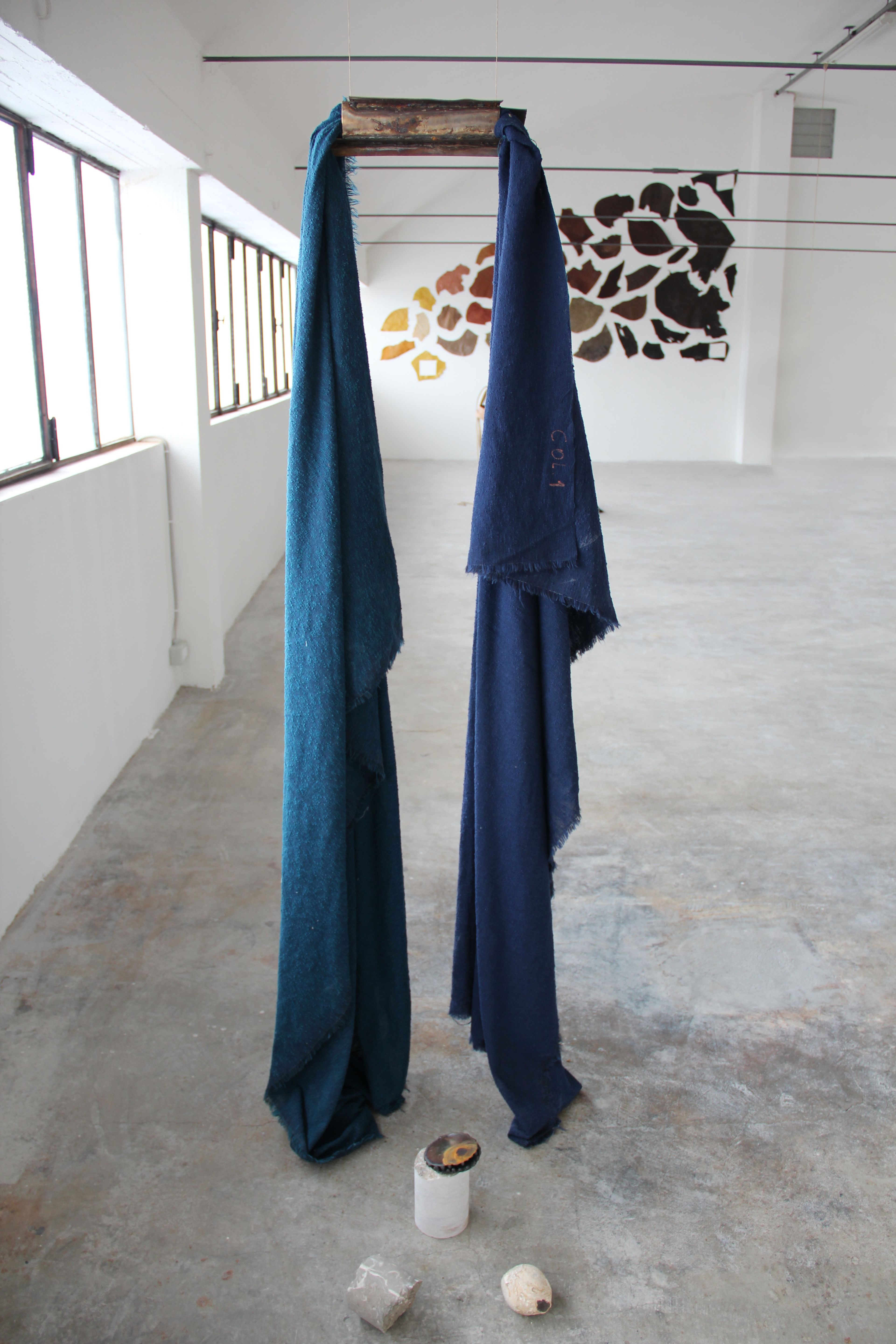
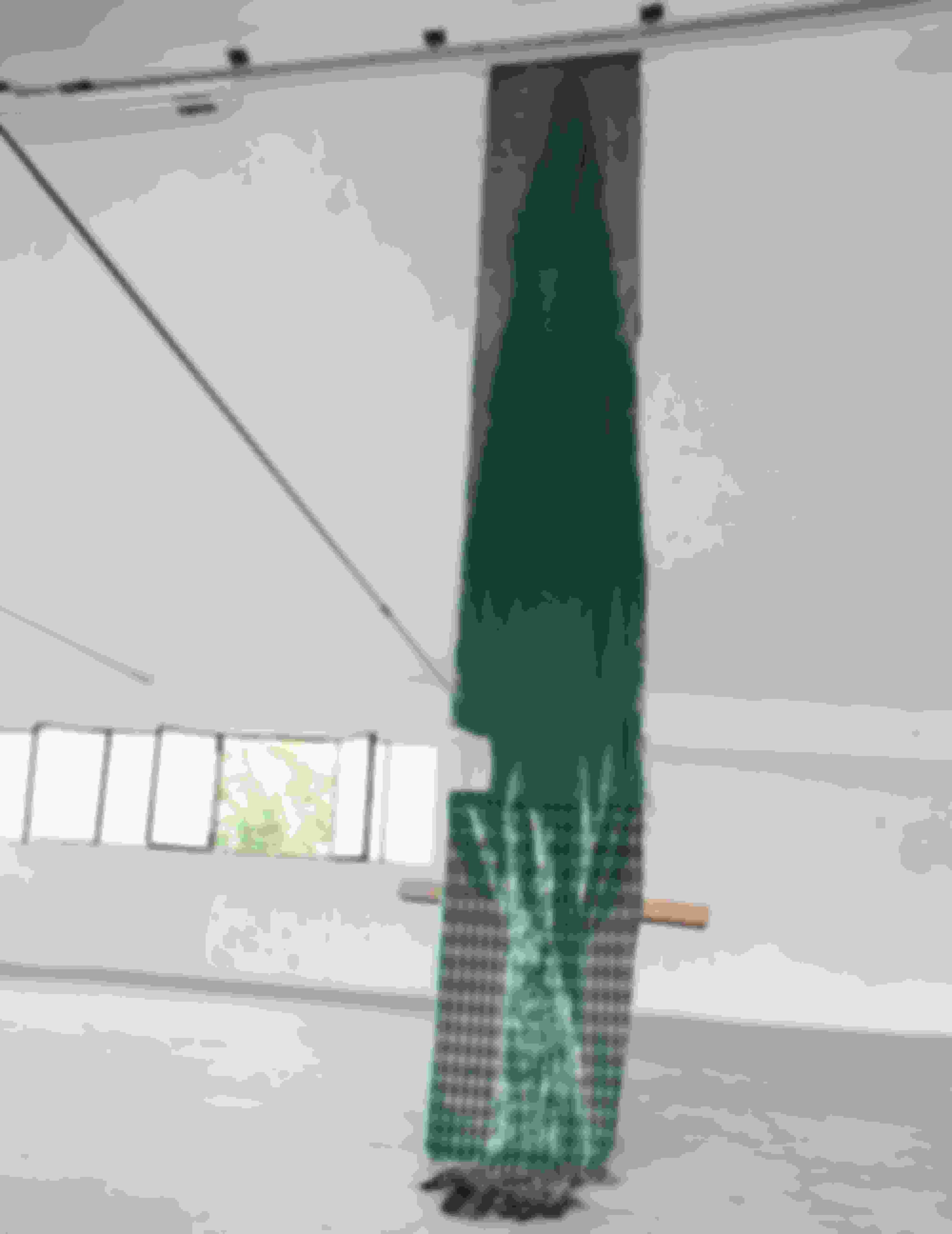




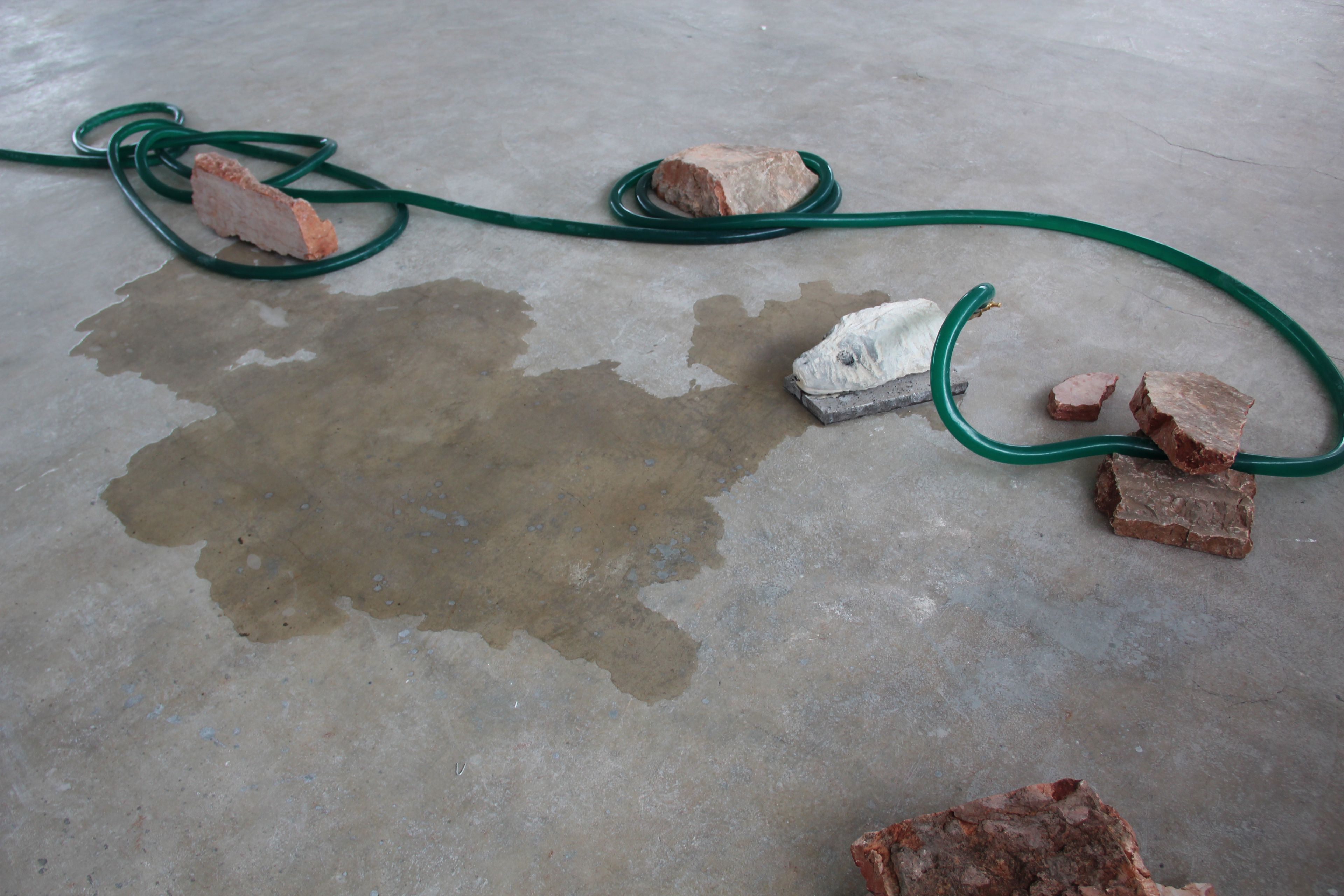



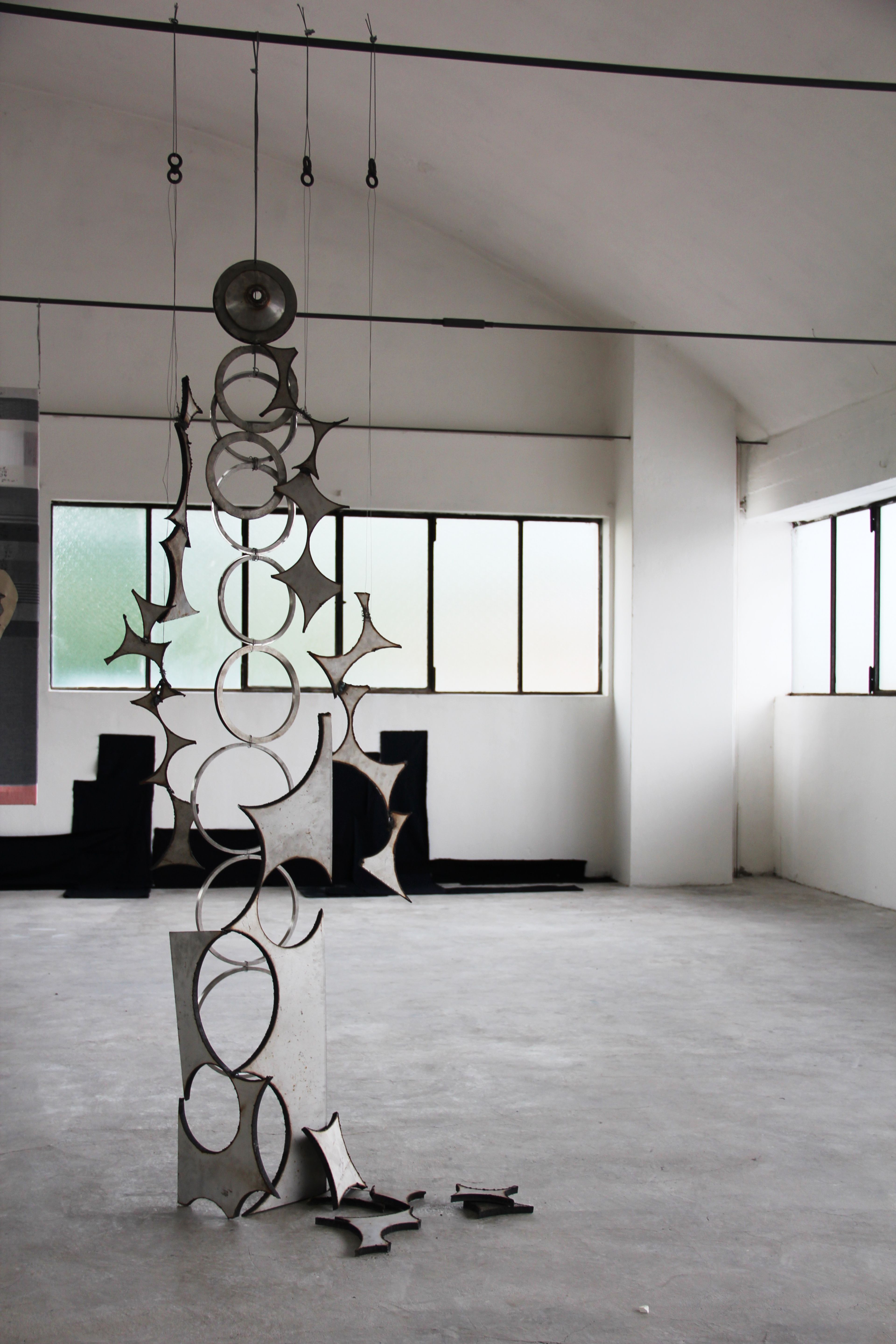
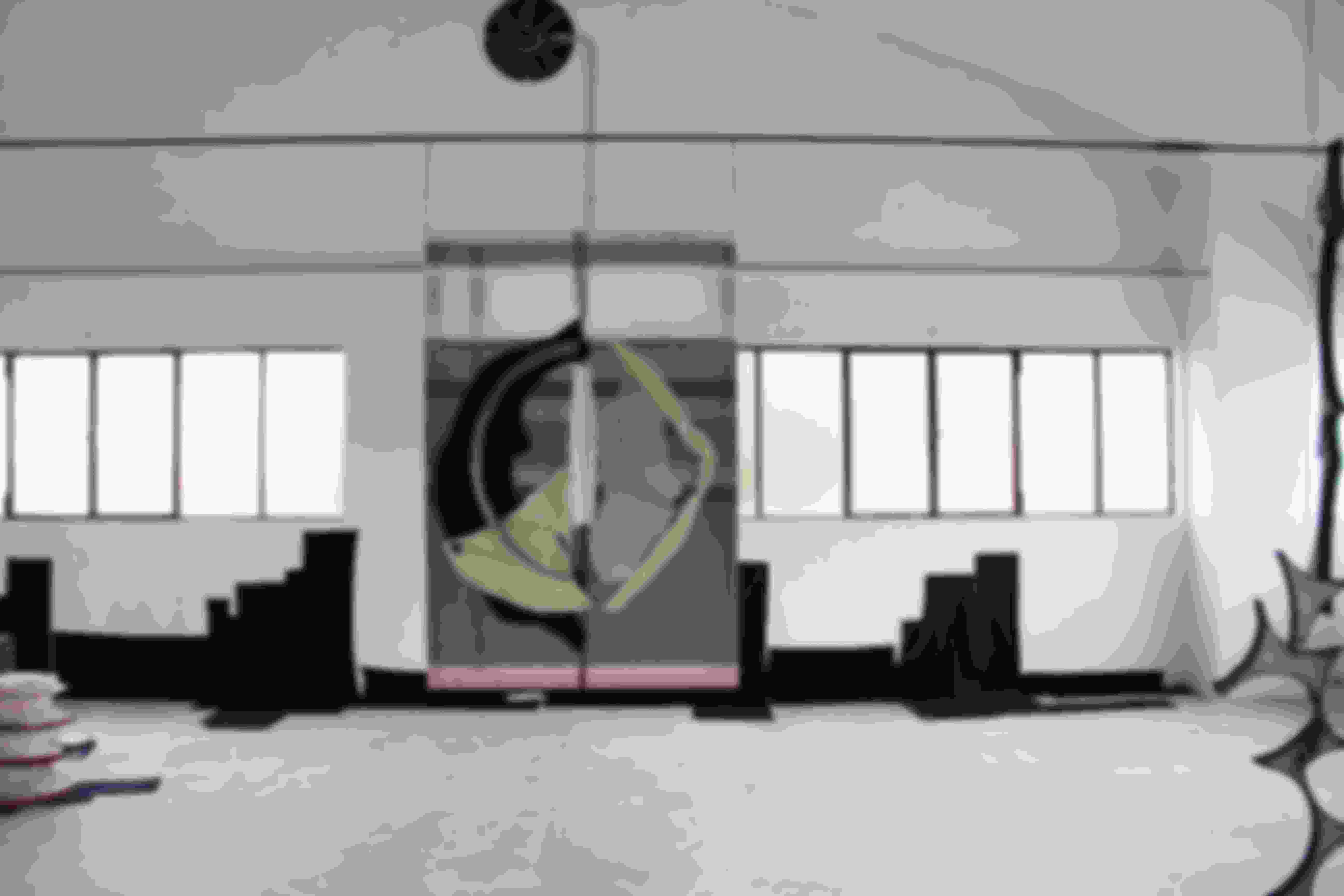
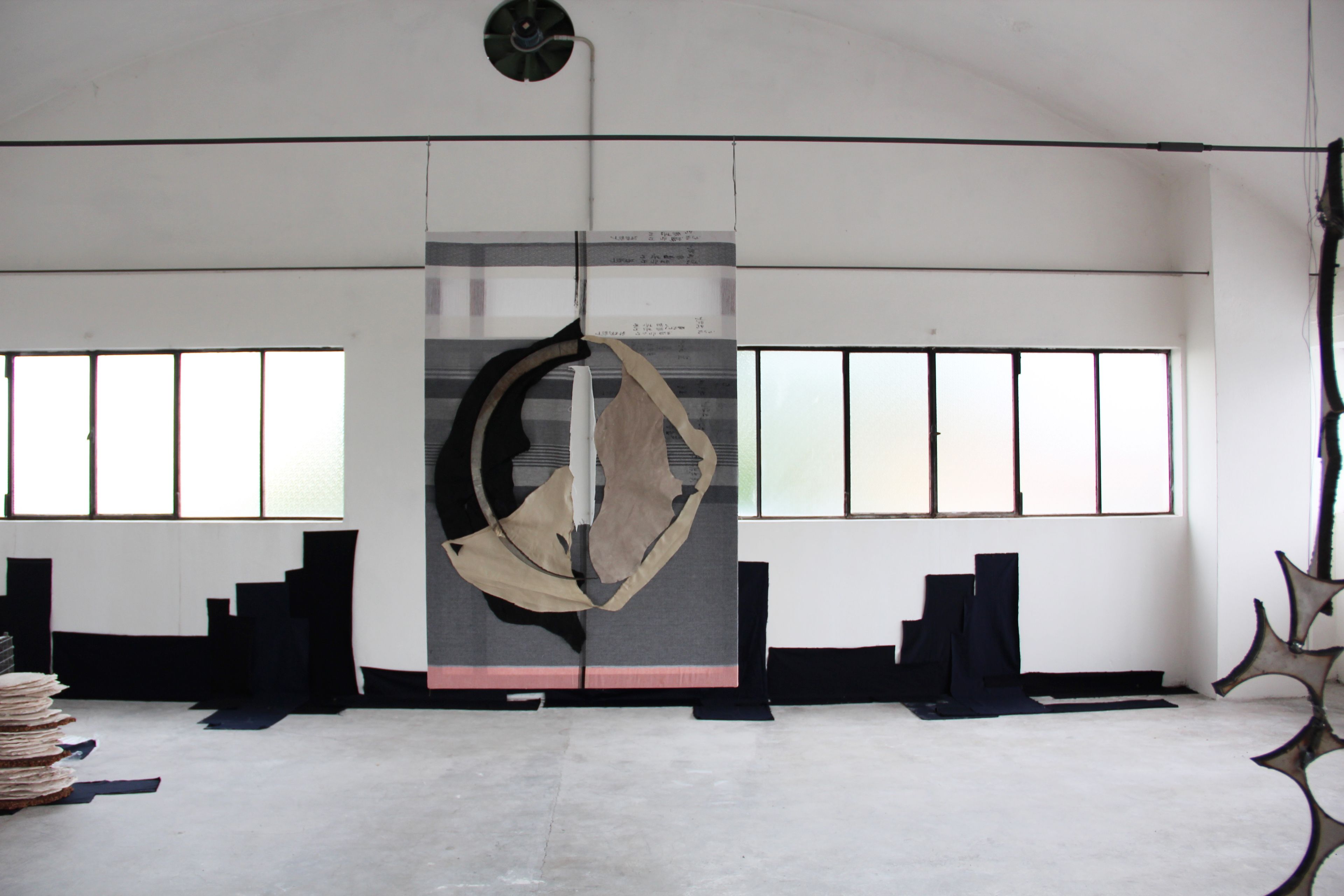
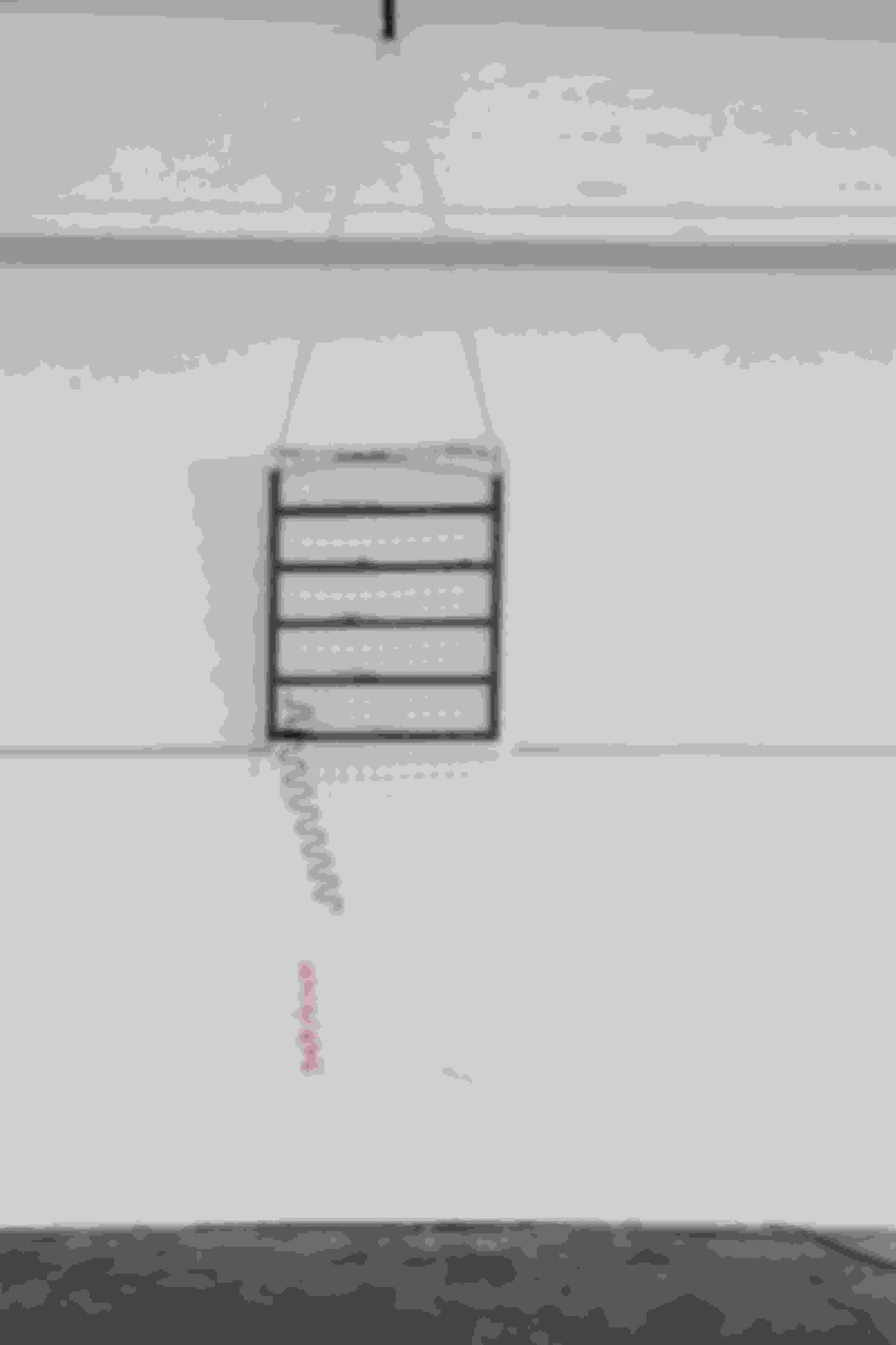

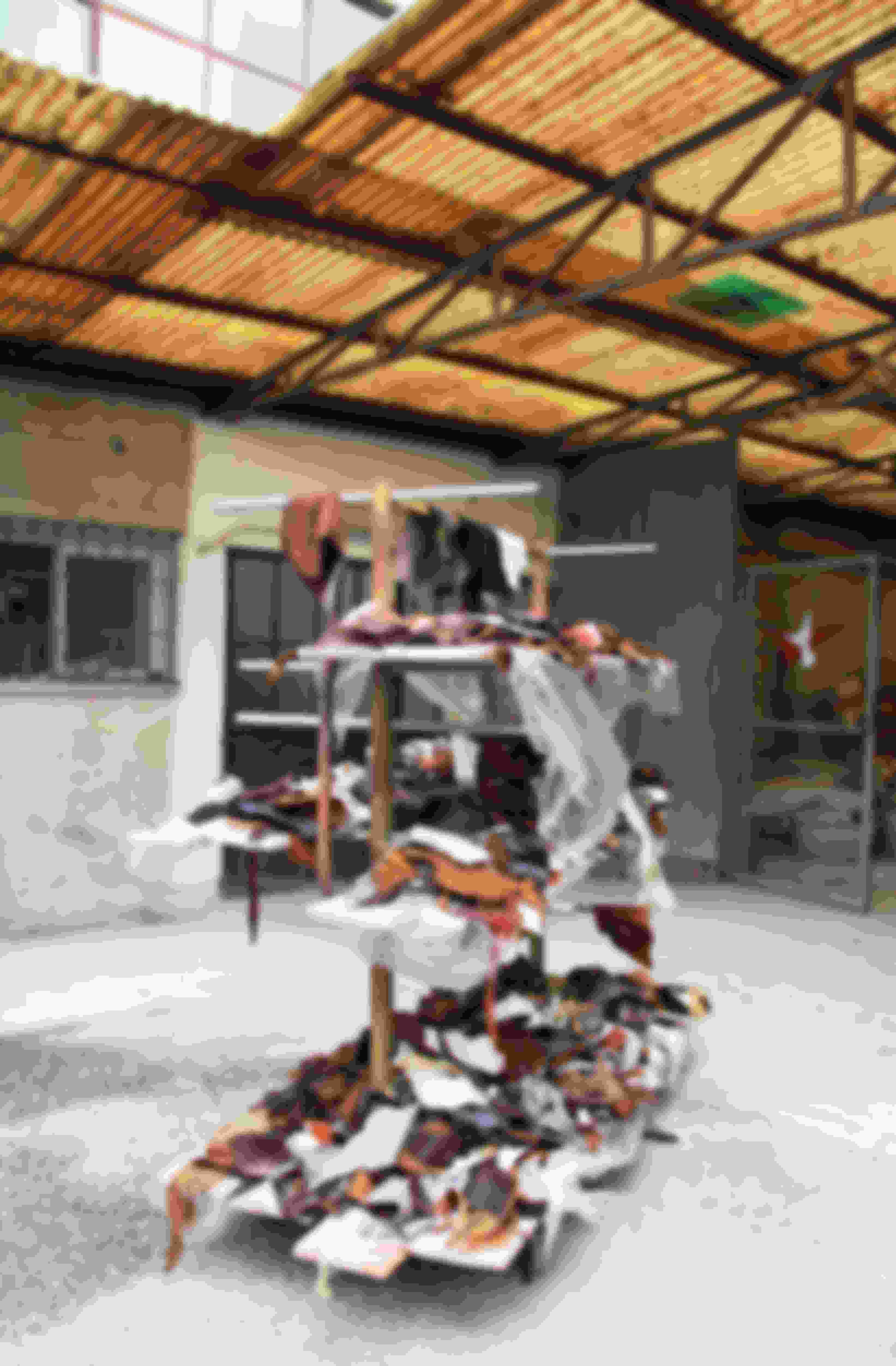

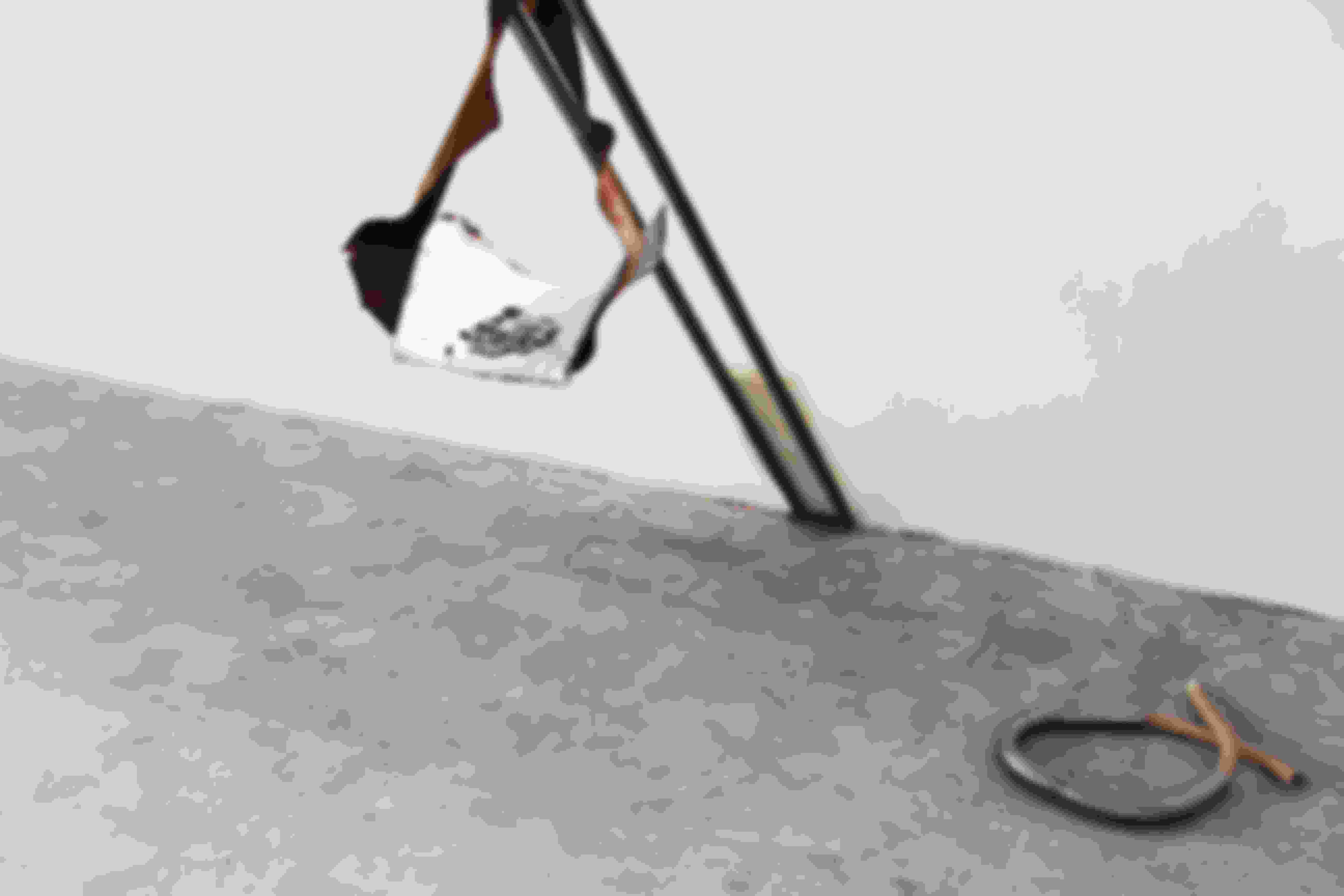
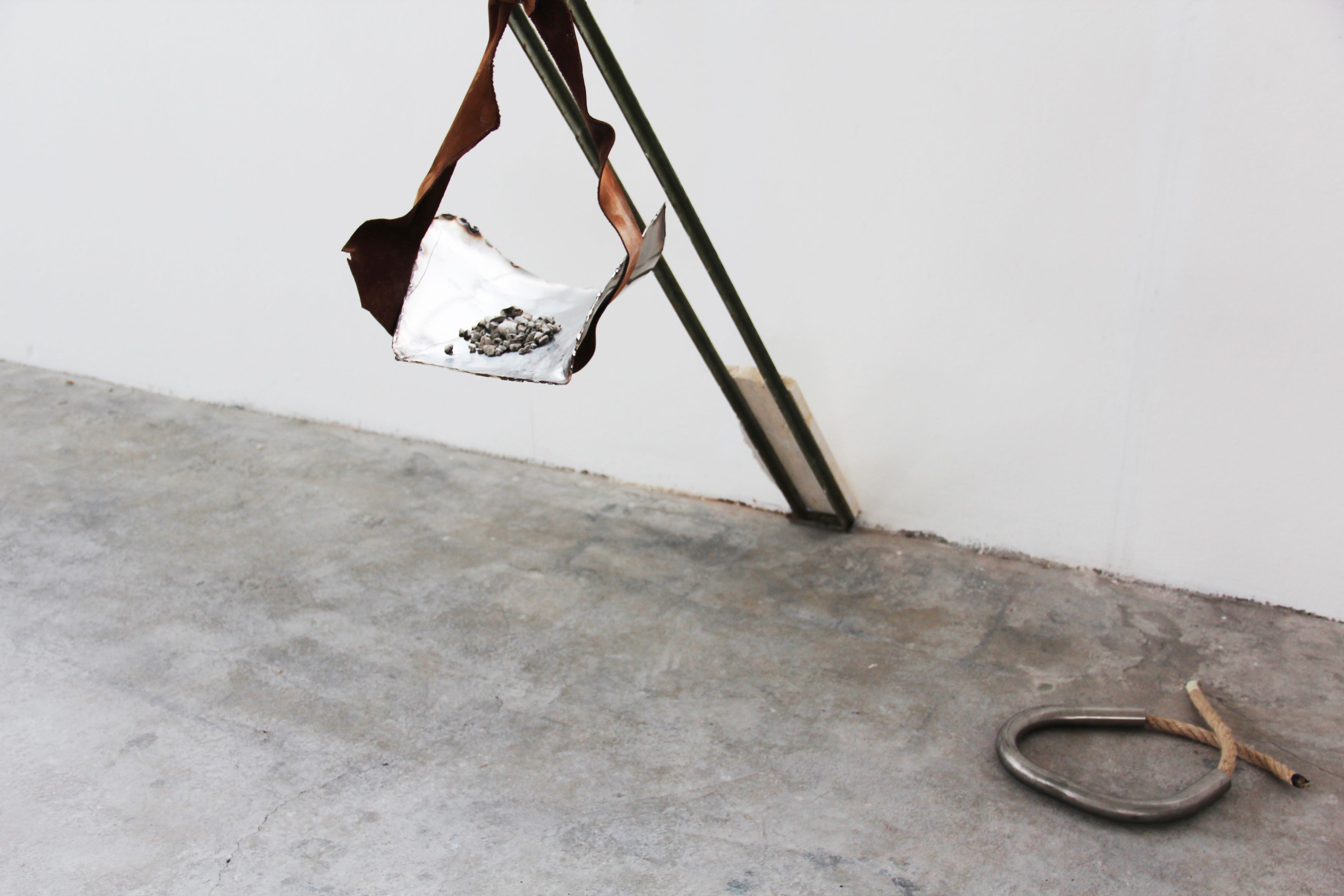




Thank you, 2017 - 2019
When I decided to leave New York, I did short travels to Europe to understand where I should live next. I visited Berlin, Paris, London and Milan. Many friends, distant relatives and even strangers were so kind helping me as I moved around with a small suitcase, feeling like not only my body didn’t have a proper home, but also my mind. I wasn’t sure where to go so I just floated around. A stint at a nomadic life; sleeping on couches, in hostels and in Airbnbs. I wanted to give thanks to those people who demonstrated a care towards me during this difficult time - and thus, I created the concept of a thank-you drawing.
The drawings are of passion flowers. The first image of a passion flower that I created is in White Powder, White Stone when I first worked in Nove, Italy. I learned about this flower when I visited my grandmother’s home in Breganze and saw a climbing vine on the outer brick wall, and . “Passiflora” my uncle told me, and so when I got back to the studio I researched more.
The native Americans used the Passiflora, or Passion flower as named in English for medicinal and culinary purposes. The Aztecs and the Incas relied on this flower as a sedative to battle insomnia. The flower even became part of a story connecting colonization and the Catholic religion. It was the Conquistadors from Spain who invaded Central and South America who basically re-branded this 1000 plant.


They saw the petals and sepals to represent the 10 disciples, the 3 stigma to represent the nails on the cross, the 5 anthers to be the wounds of Christ, and the corona filaments were thought to represent the crown of thorns. The Christian narrative took this plant that has been part of the indigenous cultures and projected their symbology on to it. Such is colonization, and such is something that should be spoken about and understood.
As I traveled to these other countries I read about their histories, the colonizations that occurred, and saw that being born in Canada - a country colonized by both France and Britain - brought an awareness of first peoples around the world. I believe we should have the social responsibility to show gratitude and respect to the cultures and practices of first peoples that have existed for centuries before us and not let their cultures be erased. I believe that by showing this respect and speaking about this issue I help to dismantle ongoing legacies of settler colonialism. These passion flower drawings put into awareness that one can be at home in another country, but should make a point to understand and respect those who came before them. I draw and paint many passion flowers and mail them to those I am grateful to whom are located around the world.
During my last day at Columbia University I spent hours cleaning and repainting the studio space for the new artist to enter that September. Before leaving through the door, I dropped my things, took out a piece of charcoal and sketched a large passion flower on the wall. It was my way of saying thank you to that space that served me during my last year of graduate studies. I stepped back, looked at it for a few minutes, took a few pictures, then reached for pale of white paint, and painted over it and left.
The Fair Sex, 2020 - 2022
The Fair Sex looks at my personal experience to understand how culture enforces certain gender norms and how that affects ones life years later. Critiquing toys we play with, how certain childhood movies can effect our self worth, the pressures of the biological clock, and learning how to find the courage to follow our dreams, . The projects final work is a tapestry symbolizing both a flag and an altarpiece --- to represent a future led equally by women.
Human Being Born
I was born at 12:27am, on August 17th 1986.Wrapped in a pink blanket, I remained with my mother in the hospital for several days. On a bedside table, stood a ceramic figurine of Walt Disney’s Cinderella, my father’s first gift to me. As I grew and began to understand her dancing, musical silhouette as an icon of femininity, I couldn’t help but notice how this portrait of the heroine benefitted men rather than the woman purportedly at the story’s center. In Disney’s rendering, Cinderella was a walking doll with huge, child-like eyes and a tiny waist. She was demure, obedient, and decorative. She bought her freedom by donning the fancy dress and marrying the prince. I know my father didn’t intend this gift to be repressive - I was his princess.I tried to see past these aspects of the Disney figurine and looked for the saving graces in Cinderella’s story: her resourcefulness and hard work, her love of animals, and her ability to find magic in the mundane. Her story taught me that my imagination was endless and that I could create my own world.
But none of these lessons were encoded in that small ceramic figure. I began to understand how my body was similarly interpreted—that being a girl meant that I was supposed to play house and take care of dolls, games of make-believe meant to coach the reality of my later life. But I wasn’t interested in that type of play.
I wanted to construct cities for my toy dinosaurs with Legos and train sets, hide out in pillow forts, or dig in the dirt for buried treasure. As I grew older, I became an aficionado of strategy games like chess or battleship. I never felt like “one of the girls.” Sometimes, I would imagine the story of my birth and childhood as though I really were some otherworldly creature, made of fundamentally different stuff.
Playing upon stereotypes of boy and girlhood, I have recreated these different playthings from my childhood as ceramic forms sapped of color. On a simple, square surface, Cinderella terrorizes a broken landscape of Legos and model train tracks.
A photograph with the thematize color-based gender stereotypes discussing the contemporary Italian practice of celebrating the birth of a new child by decorating homes with extravagant ribbons in either pink or blue.
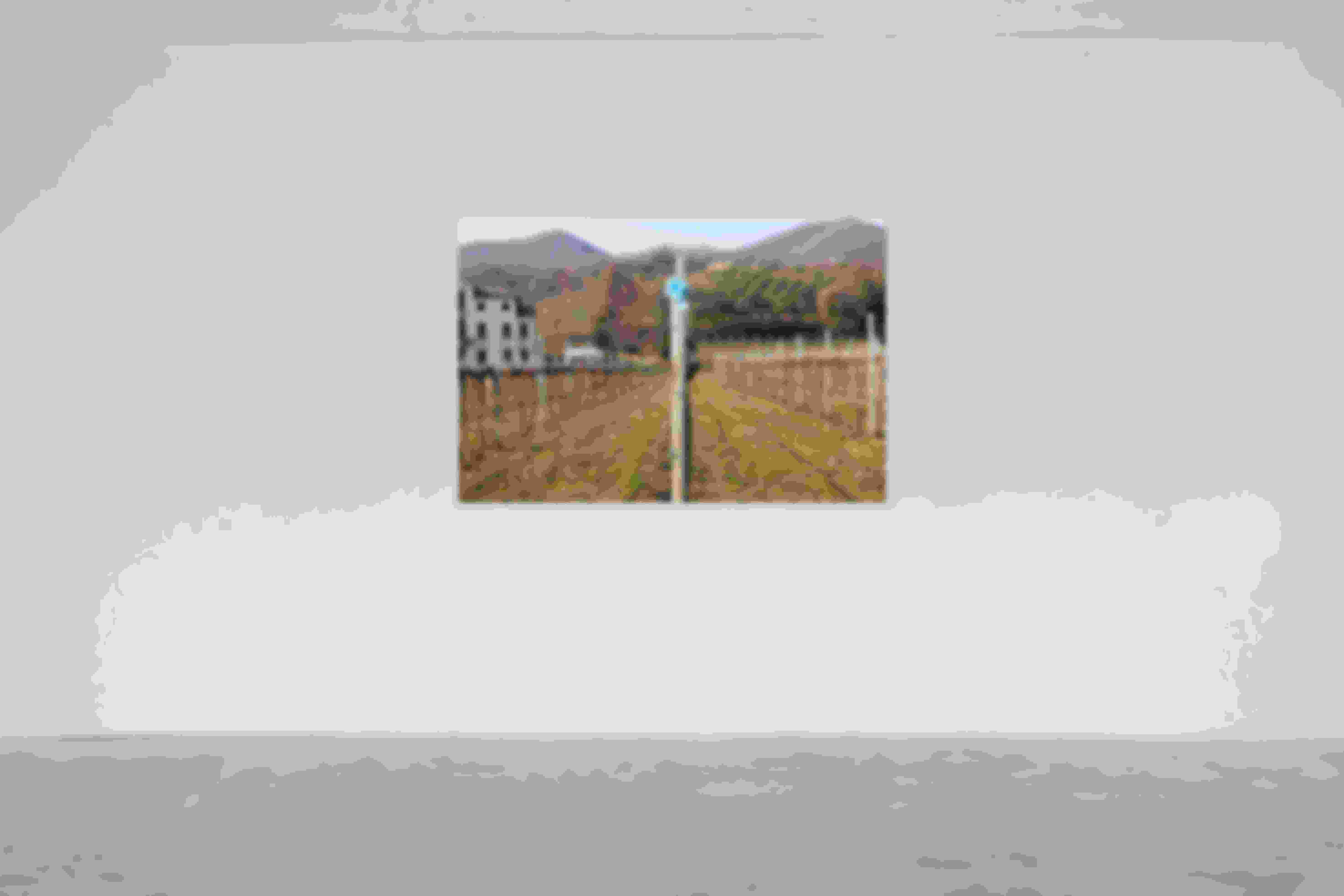

Another photo of me holding a ceramic baby with the inscription of me name, year, and time of birth. The sculpture weighs the exact weight that I was when I was born.


Other photographs show the white ceramic figures, lego, and brio train set in contrast with a typical Italian tile floor from the 1930s, the time frame my grandparents were living in the town where this work was made (before they immigrated to Canada).
In a video work, I crush this replica of the Cinderella figurine, a final attempt to exorcize the conventions that it upholds.


Mickey and Da Vinci
Growing up in a Toronto suburb—Woodbridge, the Italian neighborhood—I didn’t have much access to the wealth of Italian art history. Oddly enough, what defined art for me as a girl was Disney. I can’t remember when I started watching Disney films, and it was longer than usual before I stopped. The second-eldest of five siblings, my cinematic palate was limited by the comprehension of the youngest. The consequence was that I and my older sister were well into our teens before the barrage of animated characters ended.
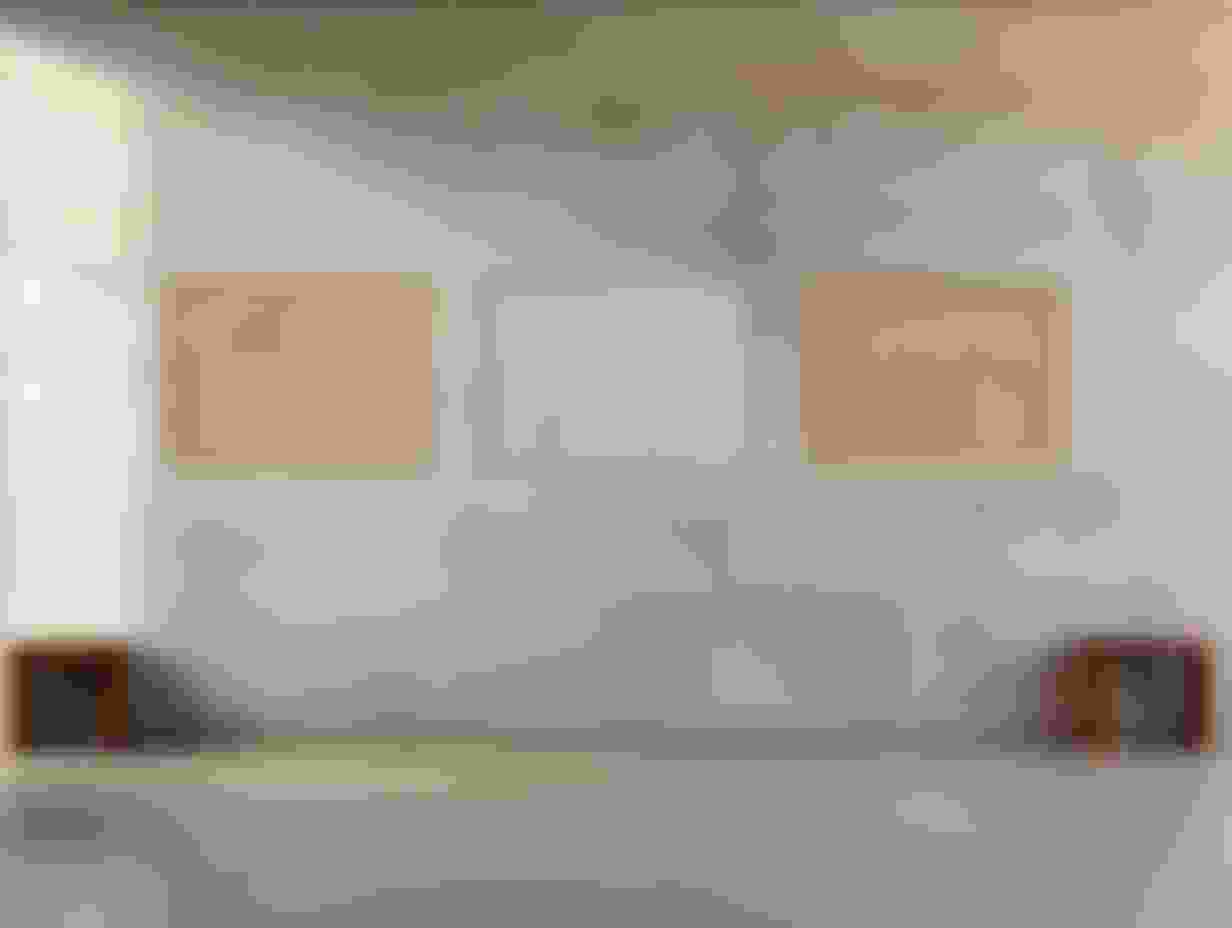
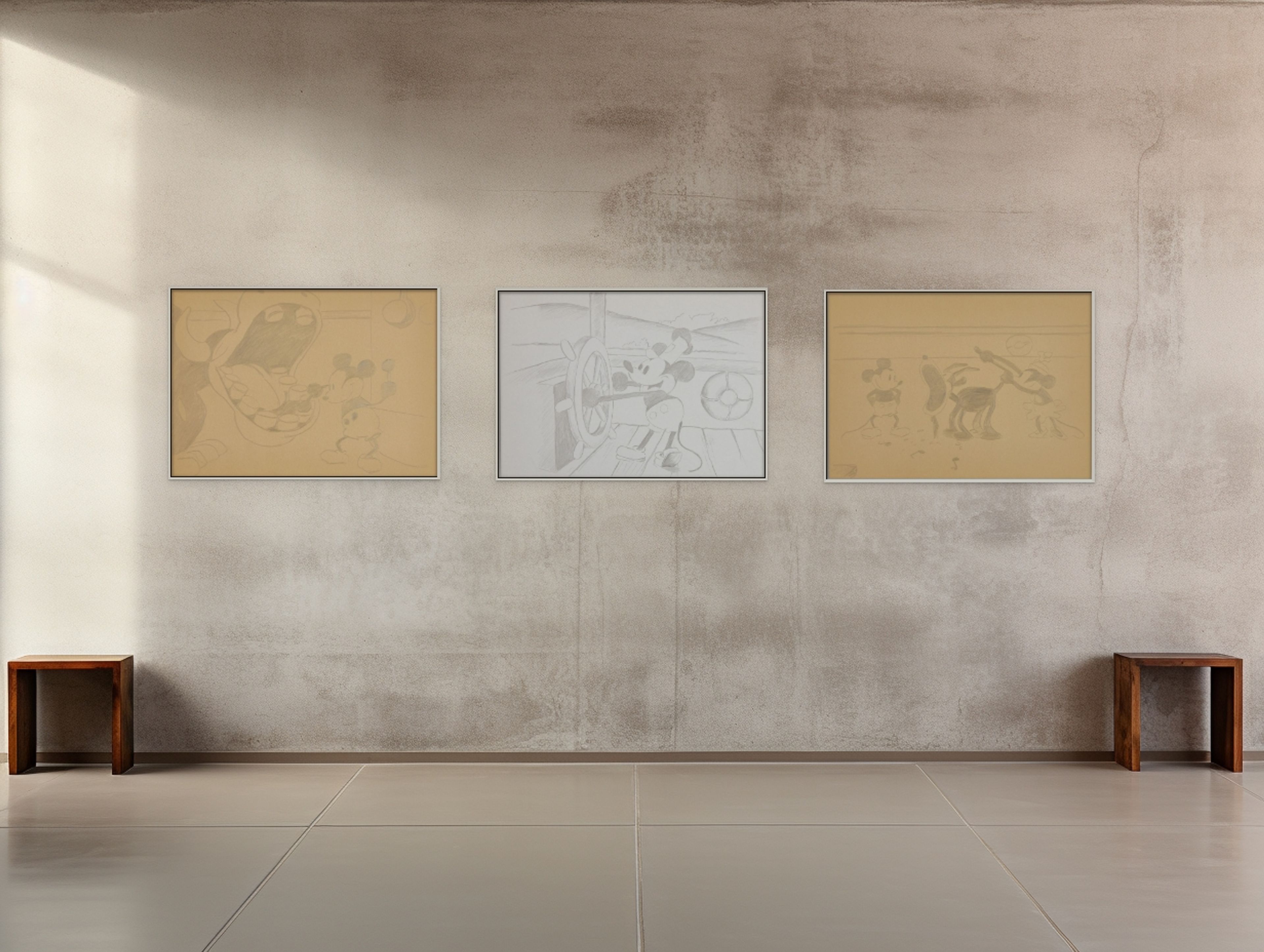
As a child, I loved to draw, tackling linework as a puzzle to solve, looking at both positive and negative space for clues as to how to capture an image. I loved to draw Mickey Mouse, to chart his simple, interlacing geometries in thin pencil lines. I would draw the outlines and my sister would fill them in with color, a more arduous task that I didn't, at the time, have the patience for.


When I was older, I was advised to enter the field of illustration, perhaps even work for Disney—since I was ‘creative.’ Of course, at the time, I didn’t know the range of possible paths for someone in the arts. This was something I learned about later in life. I opted not to become an animator; my interest had always been in using my hands to make and play with material. I had no desire to focus my energies on a computer screen. I joined the family lighting business. And, 13 years later, I left it. Since 2021, I have celebrated returning to my childhood ability to let my imagination run loose and to simply make.
The silverpoint sketches are shown in a row, referencing the hand drawn slides used for the making of the film. There are multiple sizes of the works, with subtle differences that when seen one right after each other, creates a motion picture.
Thirty-Five
When I turned thirty-five in 2021, I froze my eggs. They wait for me in an Italian lab like a cold assurance of a life to come—a child, financial security, a permanent home, a partner to share my days and nights. For now, though, my womb is an empty universe, spread out like a celestial dome in ultrasound images silky with lines of information that echo the same resounding absence.


I suspend the passage of time, freeze it in the medium of photography. Twelve images that shift progressively like the changing faces of a chaste moon. Still, details escape. The camera seeks stability, but my hand shakes, Artemisia moves, my face turns. The photographs clutch at the traces of what is beyond capture or conservation.
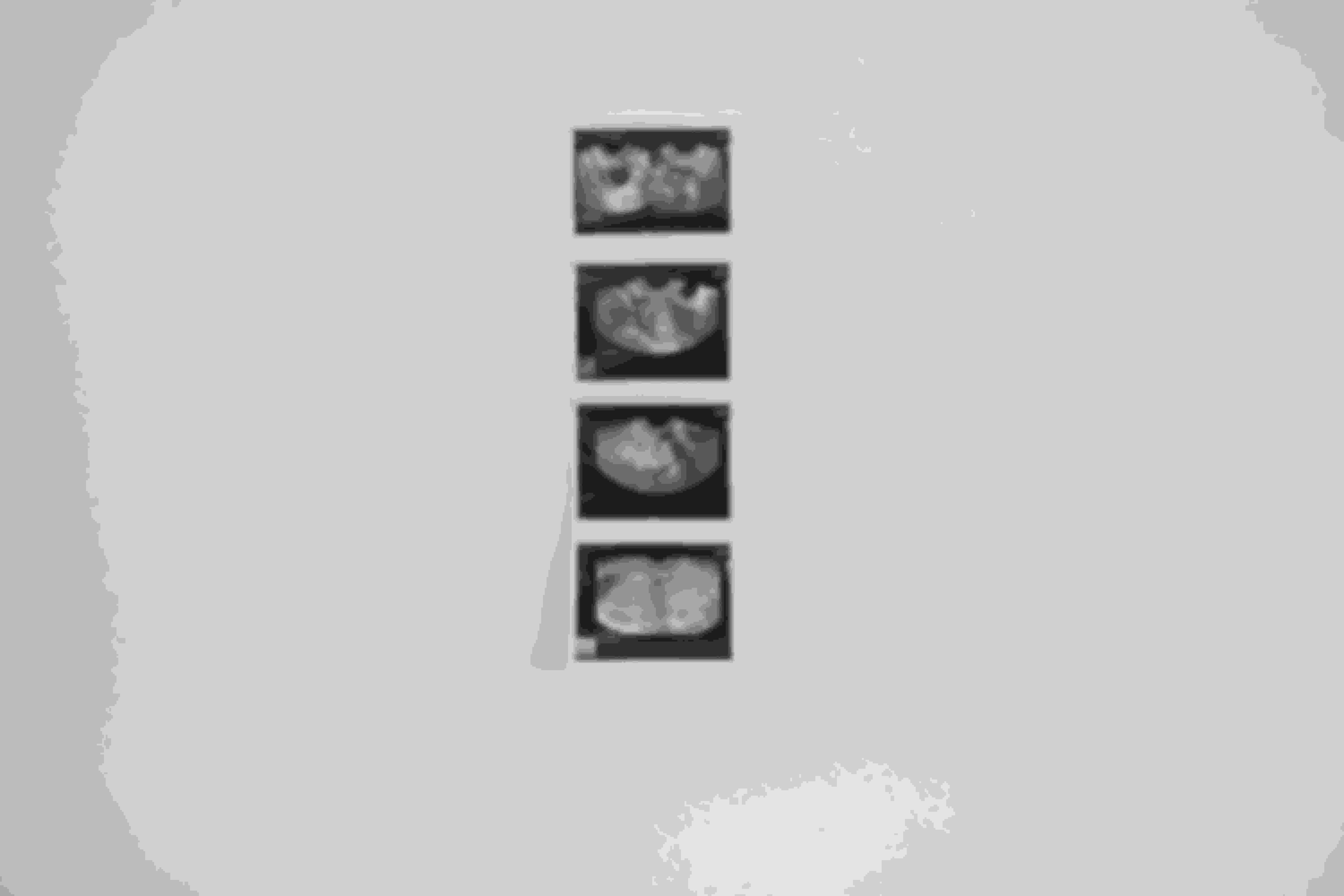
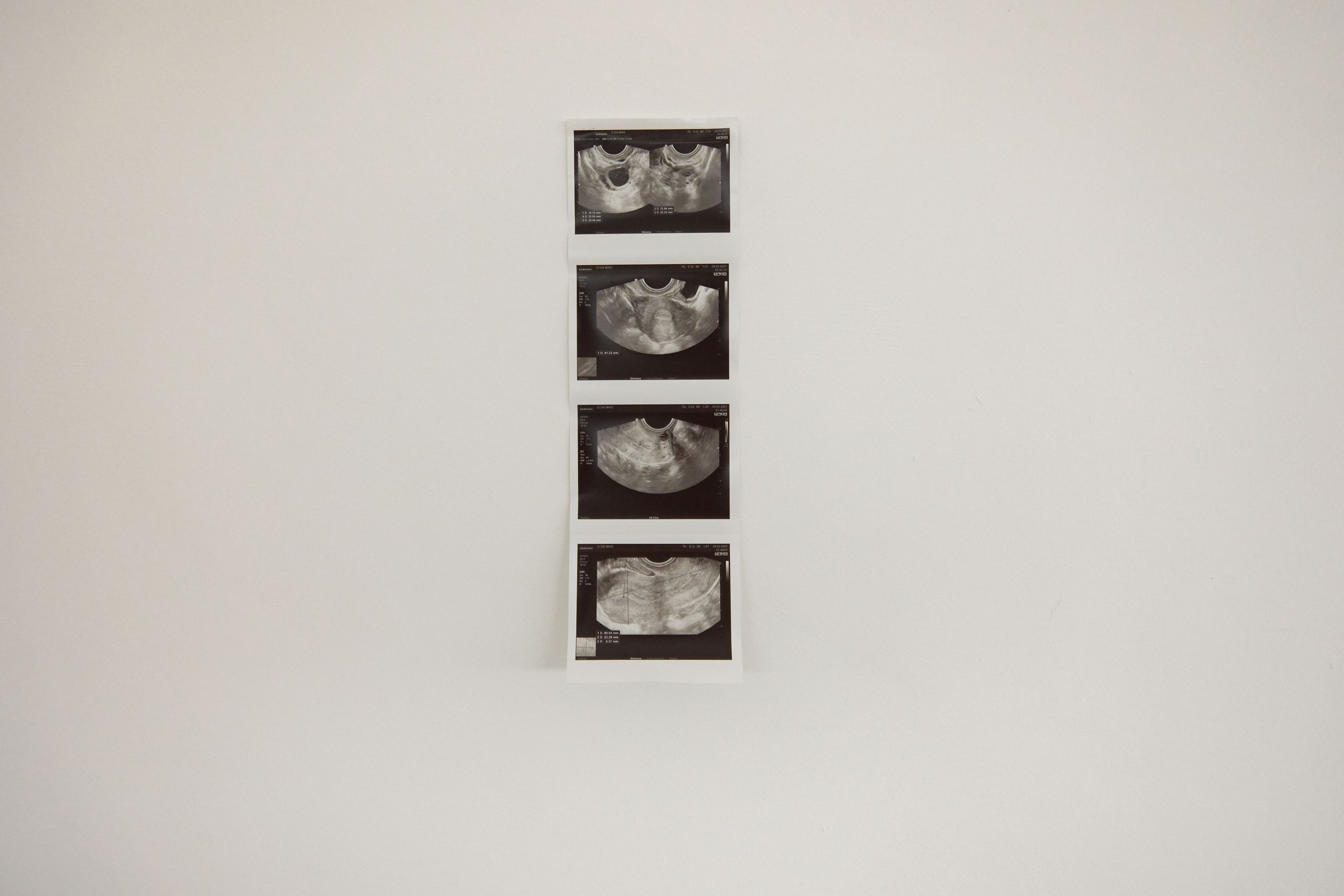
4 Matriarchy Modern
A Matriarchy Modern expresses my belief that art can be a conduit for pure feeling and spiritual symbolism, while also engaging in a Modernist revision of contemporary life. Contemporary art is often wary of spirituality, preferring subject matter that is philosophical or political. However, an important reference point for my practice is the spiritualist work of one of the few female pioneers of abstract art Hilma af Klint (1862-1944), whose non-representational compositions preceded that of other early abstractionists—including Wassily Kandinsky, Kazimir Malevich, and Piet Mondrian—by almost a decade.




A member of the —af Klint was a passionate spiritualist and medium from 1879 to the end of her life. In 1896, af Klint and four other women formed a group called The Five, which was dedicated to the study of mediumship, and in 1906, af Klint was tasked by higher powers with the production of a body of abstract works that she called The Paintings for the Temple. Though af Klint concealed her revolutionary visual practice from the world, she was surrounded by a cosmopolitan community of poets, scientists, and journalists whose ideas and information entered and influenced her work.
A Matriarchy Modern also draws on Kazimir Malevich’s Suprematist movement, which If af Klint’s work was interested in giving visual form to incorporeal forces and presences, Malevich’s Suprematism aimed to express and elicit emotional responses untethered to ideas or “objective” realities. Fundamental to Malevich’s manifesto was the decoupling of art and its historical service to spiritual and secular institutions, celebrating instead the experience of the individual: “The art of the past which stood, at least ostensibly, in the service of religion and the state, will take on new life in the pure (unapplied) art of Suprematism, which will build up a new world—the world of feeling....” The movement that Malevich started in 1915 and the treatise that he published in 1927 fundamentally shaped art for the last 100 years.
Taking up the mantles of af Klint and Malevich today, I would like to continue to re-envision the future that we are building, challenging it to be a future by and for women as well as men, a future with a more equitable ecology. The tripartite work that comprises A Matriarchy Modern acts as an icon and a flag for a women-led, utopian future. Three rhomboid fabric forms billow unevenly against a wall, their black contours nonlinear and frayed by sprays of loose fiber. At the center of each lies a square of vibrant color—fuschia, magenta, and hot pink—composed of skeins of silk strands that have been halved and sewn to the black cloth surface. The simple geometric compositions of these three textile works emerge from Malevich’s Black Square (1915). However, the black shape is replaced with a pink one that—appropriating the overdetermined relationship between this color and femininity in contemporary culture—is intended to symbolize womanhood and matriarchy. The excess threads that bleed down the fabric face in A Matriarchy Modern further interrupt the clean geometries of Malevich’s original Suprematist composition. Nodding to the spiritual basis of af Klint’s work, the three-part format of the work refers to the triptych structure of church altars which are so common in the churches around my home in Italy. Finally, the choice to render this work as a textile piece was influenced by an interest in creating an object that is conceptually and materially multidimensional.
Alpini, 2019
After WWII, my grandfather Onorino trained to be a member of the Alpini—the Italian military branch located in the mountains. He loved the mountains and was proud to join the Alpini, whose insignia is shaped like twin pinnacles, a simplified rendering of the range which gives the branch its name.
When I was growing up, my grandfather often spoke about the Tre Cime, a formation of three peaks in the Dolomites. I have always felt a certain uneasiness about the frequent comparison of these three rock faces to military architecture such as battlements or Medieval merlons—types of parapets with openings that allow the defending army to launch weapons at their adversaries below. The characterization strays too close to my grandfather’s own martial ties to those peaks and hints at a militant perception of the world in which a mountain can only be seen for its defensive value. In a literal sense, those mountains divide people. The Dolomites functioned as the border between Italy and Austria-Hungary until 1919, and, to this day, they are still the point of separation between language communities in Italy—German-speaking to the north and Italian to the south.
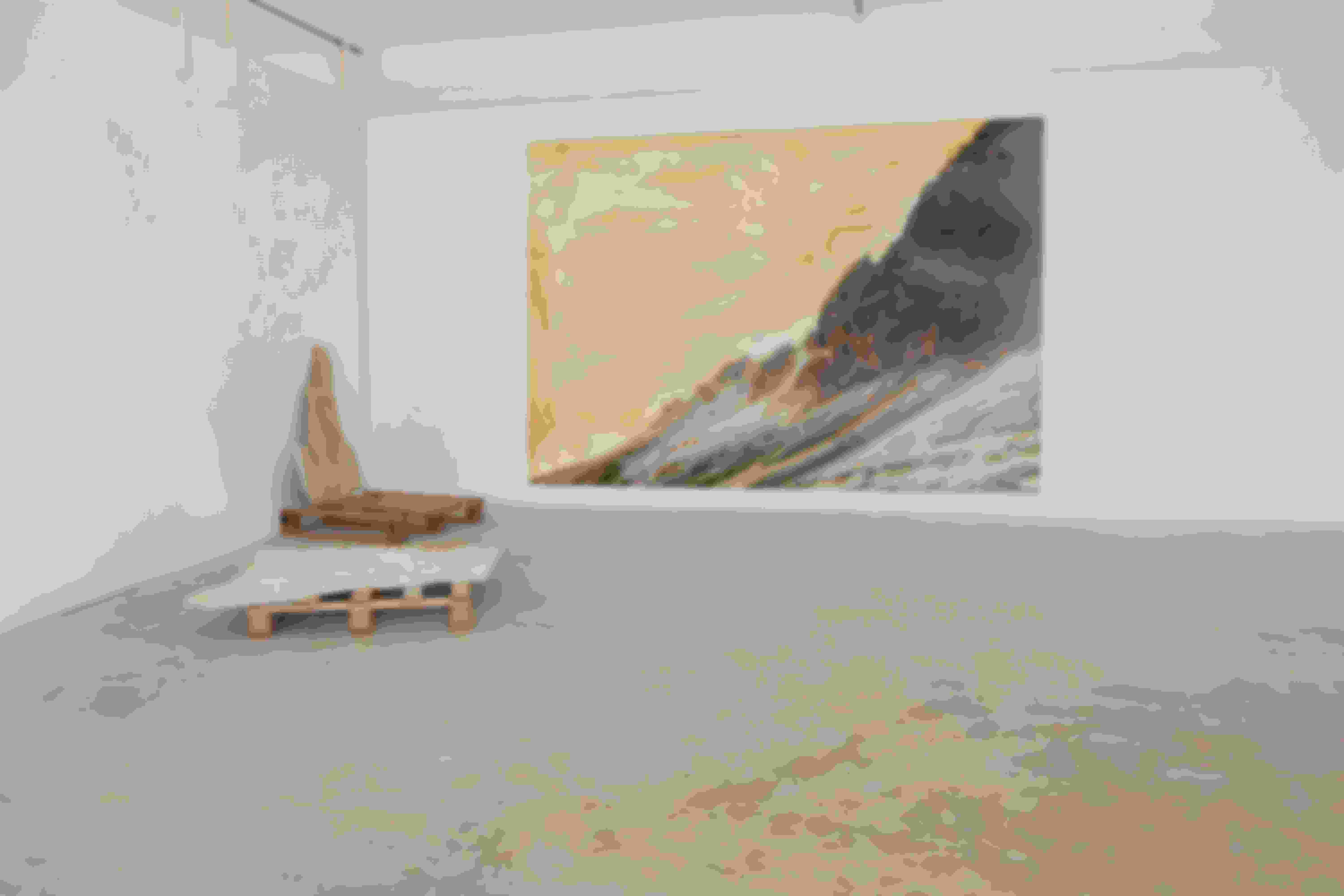

When I first visited that trifold formation, the sky was white like an empty canvas. At first I was disappointed. I feel a deep connection to Onorino—who was a ceramicist and maker like me—even though he passed away when I was only thirteen. I felt that the ascent into those higher reaches of the world was in some way a path closer to him. I had imagined my visit to one of his favorite places backgrounded by blue skies, like an omen from smiling ancestors. Instead, I found myself surrounded by the forbidding expanse of a barren cloudscape. It was only later, looking at my photographs from the trip, that I saw those desolate skies for what they were—an invitation, following Domenico Modugno’s 1958 song “Volare,” to color the sky blue and invent my own memories in paint. Not all of my additions to the photos are utopic. Through the washes of color, I create a range of feelings oppressive, idyllic, and otherworldly.
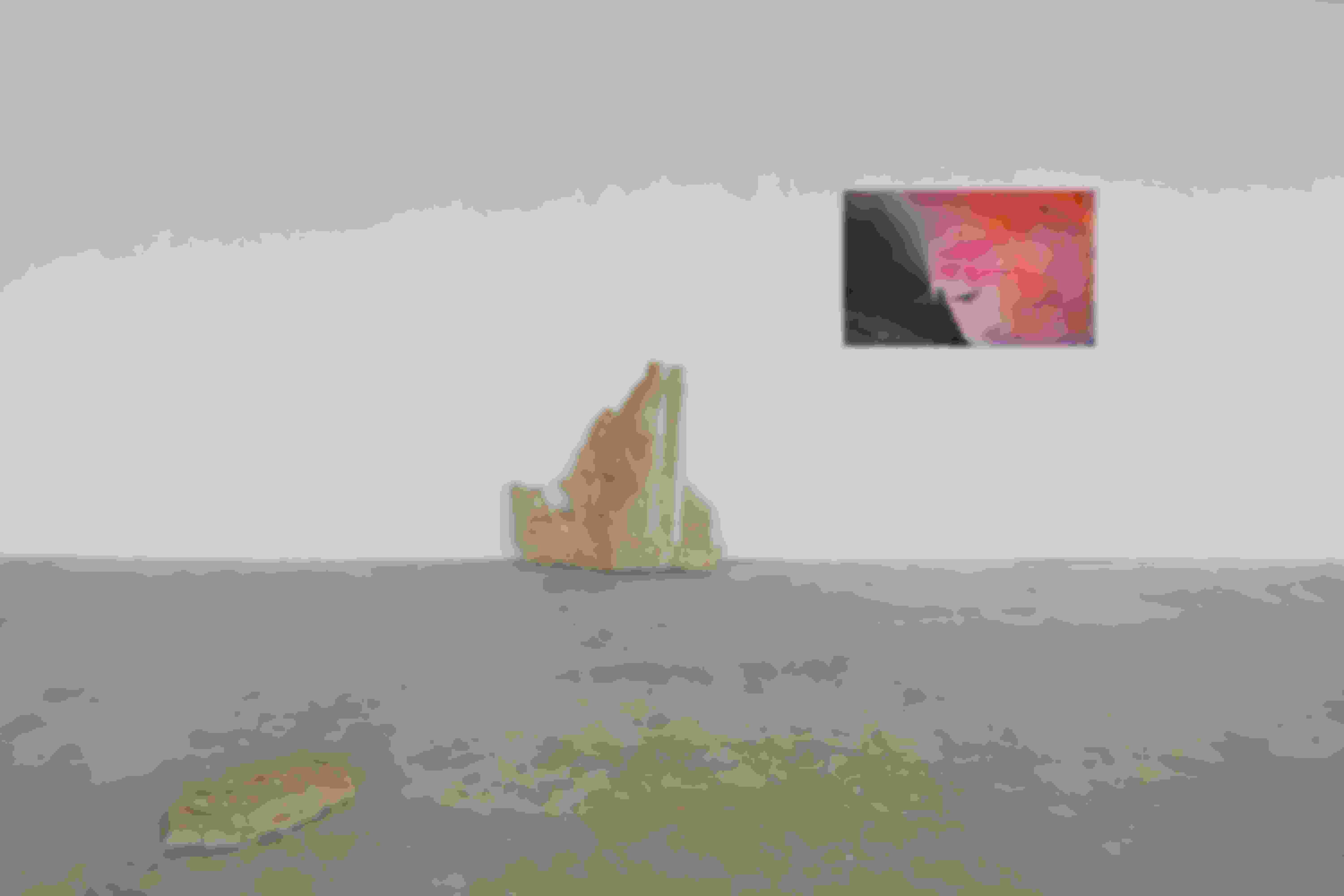



The Ladin people of northern Italy have a folktale about the Dolomites—or the “Pale Mountains,” as they call them. In the story, a mountain prince married a beautiful woman from the moon and brought her to live with him amongst the rocky peaks. Over time, looking out over the colorless range, his lunar bride grew homesick. She left to return to her home in the sky. Heartbroken, the prince wandered the lands, where he met a gnome who offered to paint the mountains in vivid color so that the prince’s bride would return to him at last. The lovers were reunited amidst a landscape brought to life by paint.
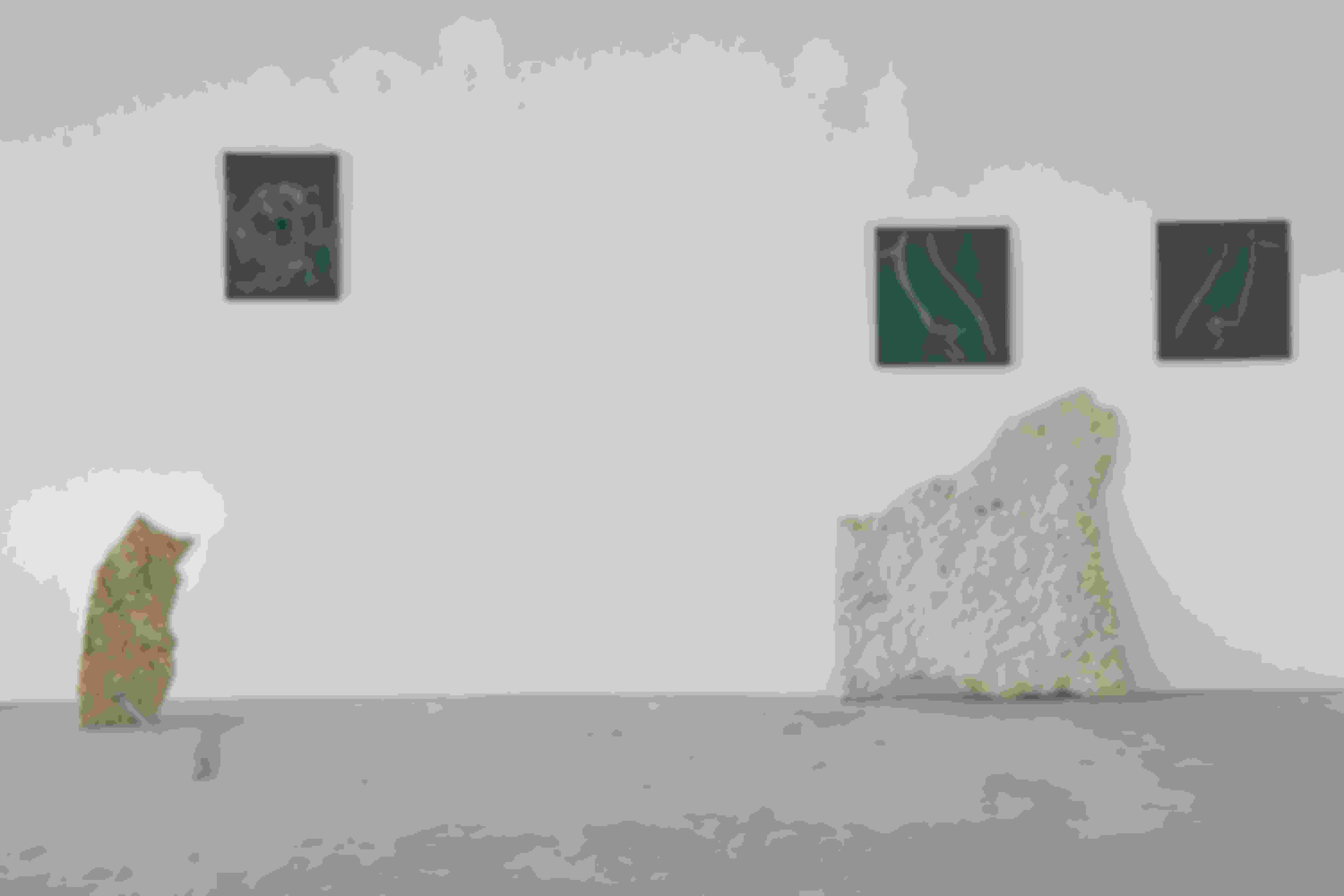

In Alpini, the painted photographs and the stone skins scattered throughout the space are intended to evoke the possibility of encountering the ethereal in the everyday. These marble fragments are the discarded material from stone quarrying, the irregular surface that is cut away to create smooth slabs for architectural use. Their cragged and pocked surfaces remind me of the moon’s dusty terrain—while these painted skies are like the colored mountains that brought the lunar woman back to the Italian prince. Reinterpreting this mountainous landscape as an alien topography, I wonder if this is also what drew Onorino to the Alps—a love not for the familiar but for the unknown.


UnMasking, 2020
In the intricate web of history and art, threads of past pandemics intertwine with modern crises, creating a tapestry of reflection and resilience. One such artistic endeavor delves deep into the realms of Venice's haunting past, weaving together the threads of the Black Plague and COVID-19, all through the translucent beauty of Murano glass and ceramic masks. In a world often masked by societal expectations and roles, Murano glass serves as a metaphorical mirror, encouraging us to embrace transparency, authenticity, and the beauty of our unmasked souls.
Imagine stepping into a gallery where history and contemporary commentary converge in a symphony of creativity. Your eyes are drawn to photographs capturing the ethereal allure of Murano glass, known for its centuries-old craftsmanship rooted in the lagoons of Venice.
Amidst these images, ceramic masks reminiscent of the iconic De Lorme nose masks hang on the walls, their forms a testament to the enduring symbol of protection and disguise. Yet, in this narrative, they speak of more than mere physical barriers. One of the Latin words for "mask" is "persona," a term rich with psychological depth. Swiss psychiatrist Carl Jung's concept of the persona as our outward-facing self, our masked identity, adds layers of meaning to these creations.
The project delves into the dialectic between concealed and true selves, between facade and identity. The mask, once seen as a barrier during the pandemic, becomes a symbol of introspection and connection. As the artist behind this project reflects, being masked led to a newfound focus on eye contact—the "windows to the soul." In a world veiled by masks, this became an avenue for forging deeper connections, transcending physical barriers to touch upon shared humanity.
Central to this artistic narrative is a candle, a miniature De Lorme nose mask crafted in glass. Its semi-transparency invites contemplation, symbolizing the gradual removal of masks—both literal and metaphorical. The flame flickering within, visible through the eyes of the mask, becomes a metaphor for illumination, for shedding light on our hidden selves and shared experiences.
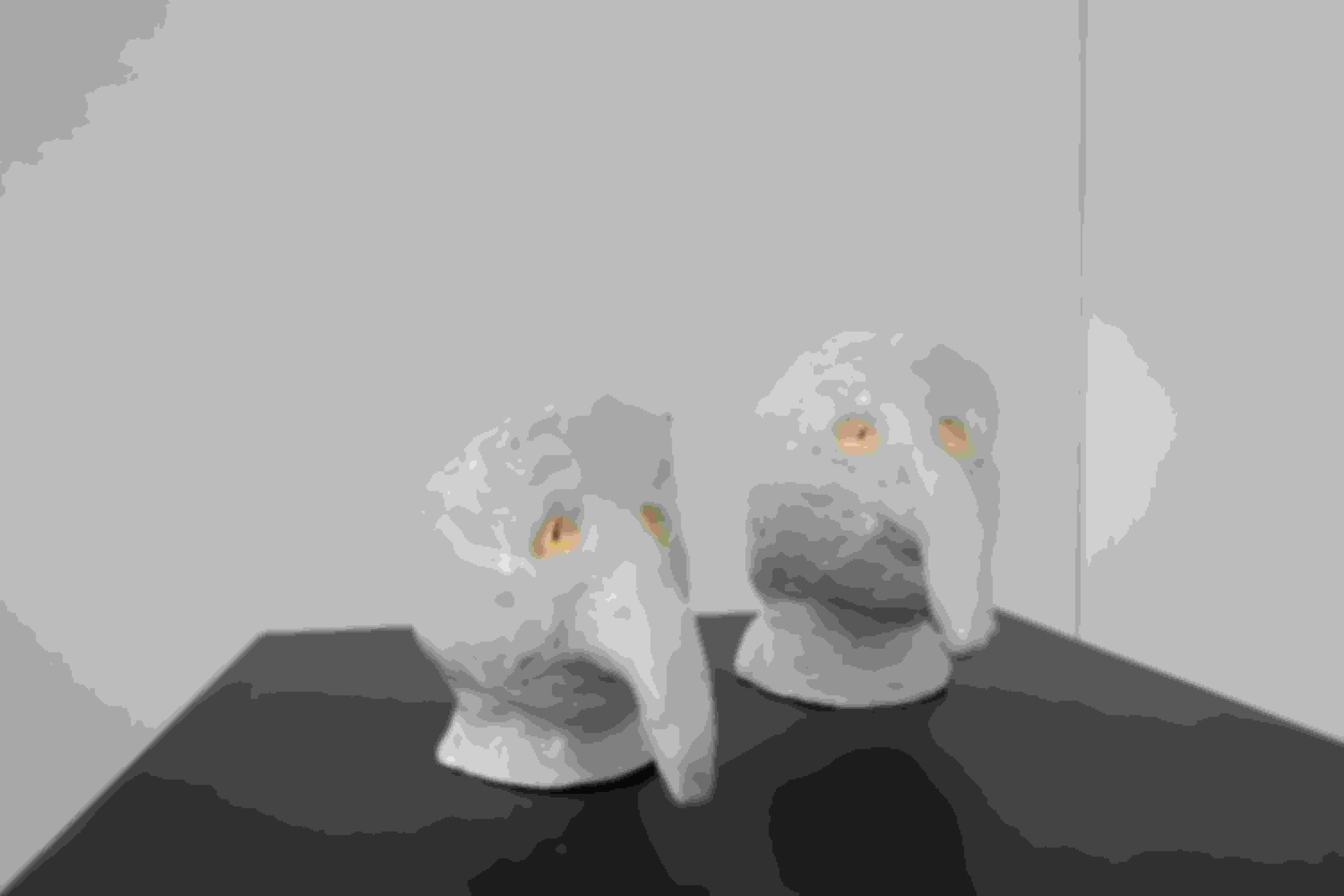

The choice of Murano glass adds layers of symbolism. Known for its semi-transparency, it embodies the journey towards transparency and vulnerability. It echoes the artist's quest to remove societal masks and foster genuine connections, much like the glass itself reveals glimpses of what lies beneath its surface.
As you immerse yourself in this artistic narrative, let it serve as a reminder of the human capacity for adaptation, introspection, and resilience in the face of challenges. Through art, we confront our past, navigate our present, and envision a future where connections transcend barriers, and masks—both physical and metaphorical—are cast aside in favor of authentic human interaction.

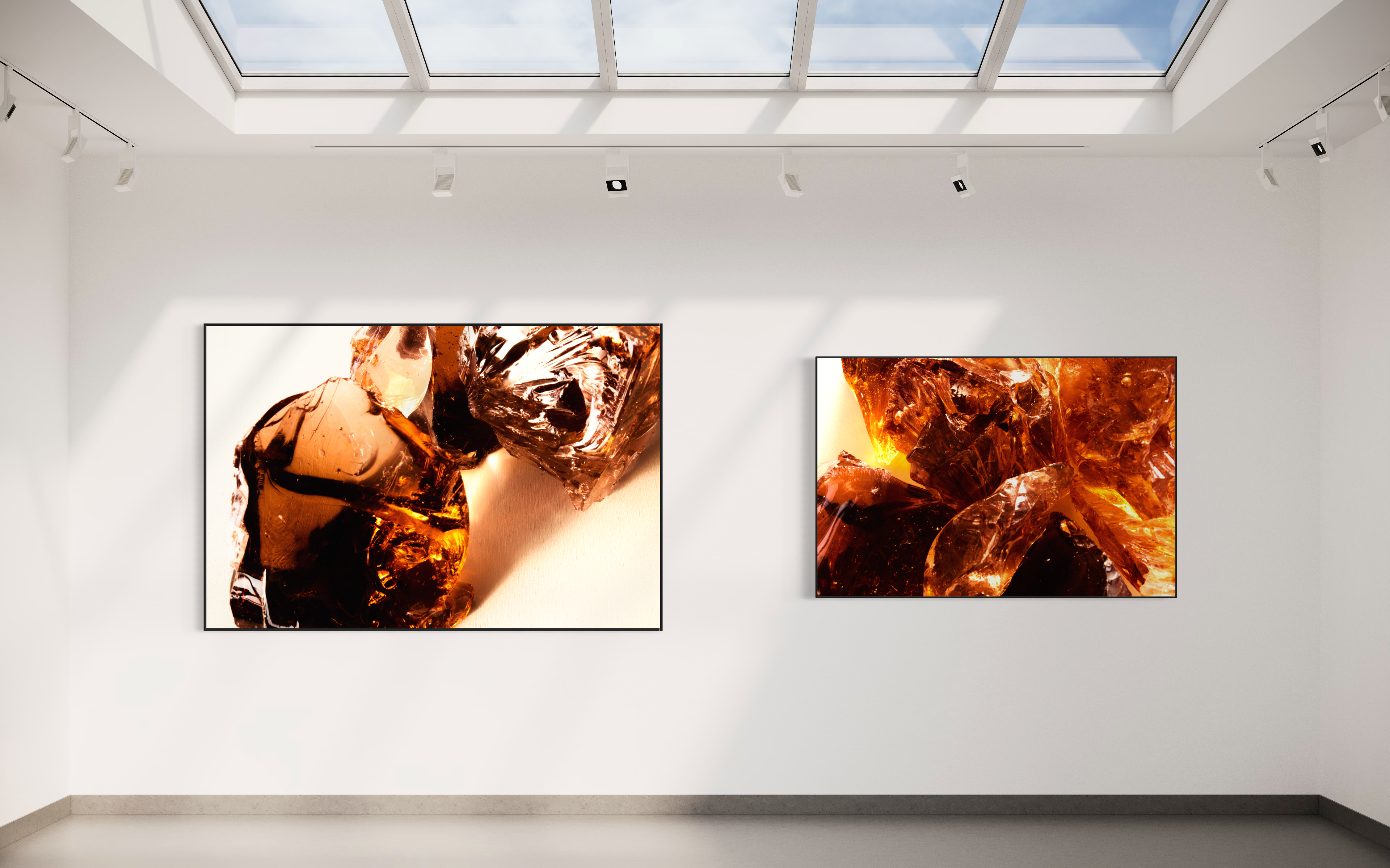
I began this collection in March 2020, when Coronavirus arrived in Italy and my mind kept conflating the past and the present. The Renaissance was born out of a nonlinear vision of time, the knowledge of the ancients entering the consciousness of 16th century Italians. I felt that, perhaps, the same thing might happen again centuries later.

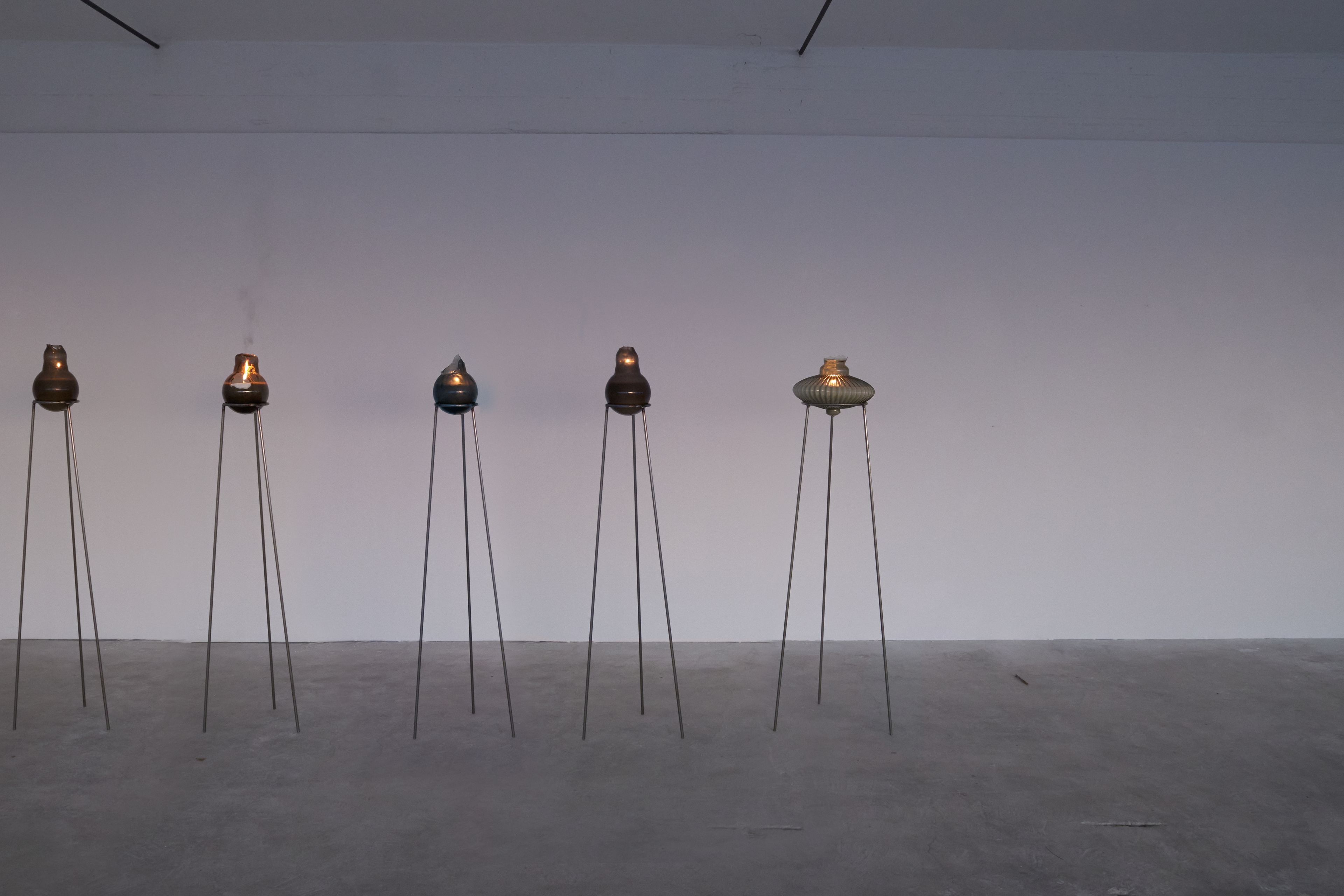
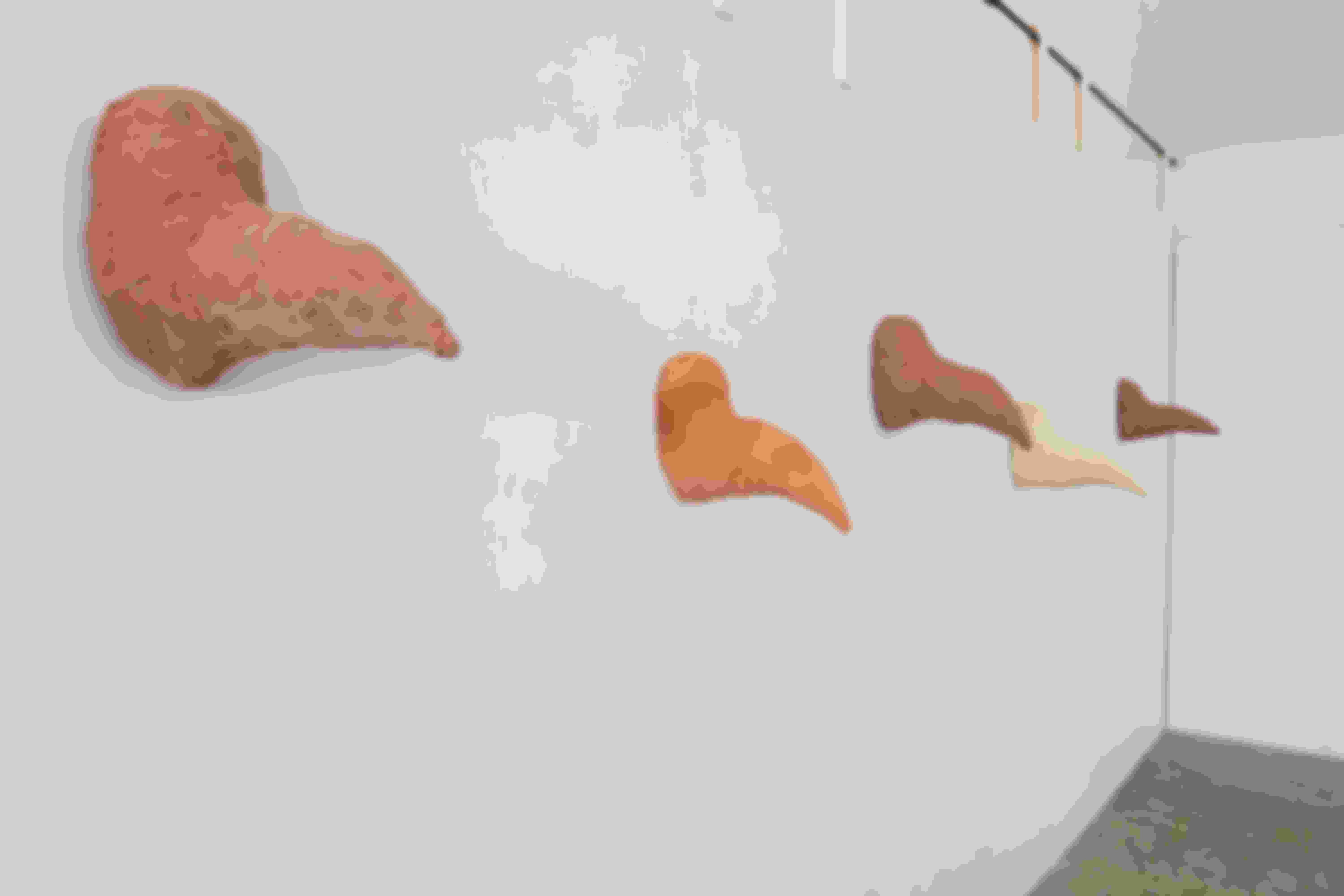
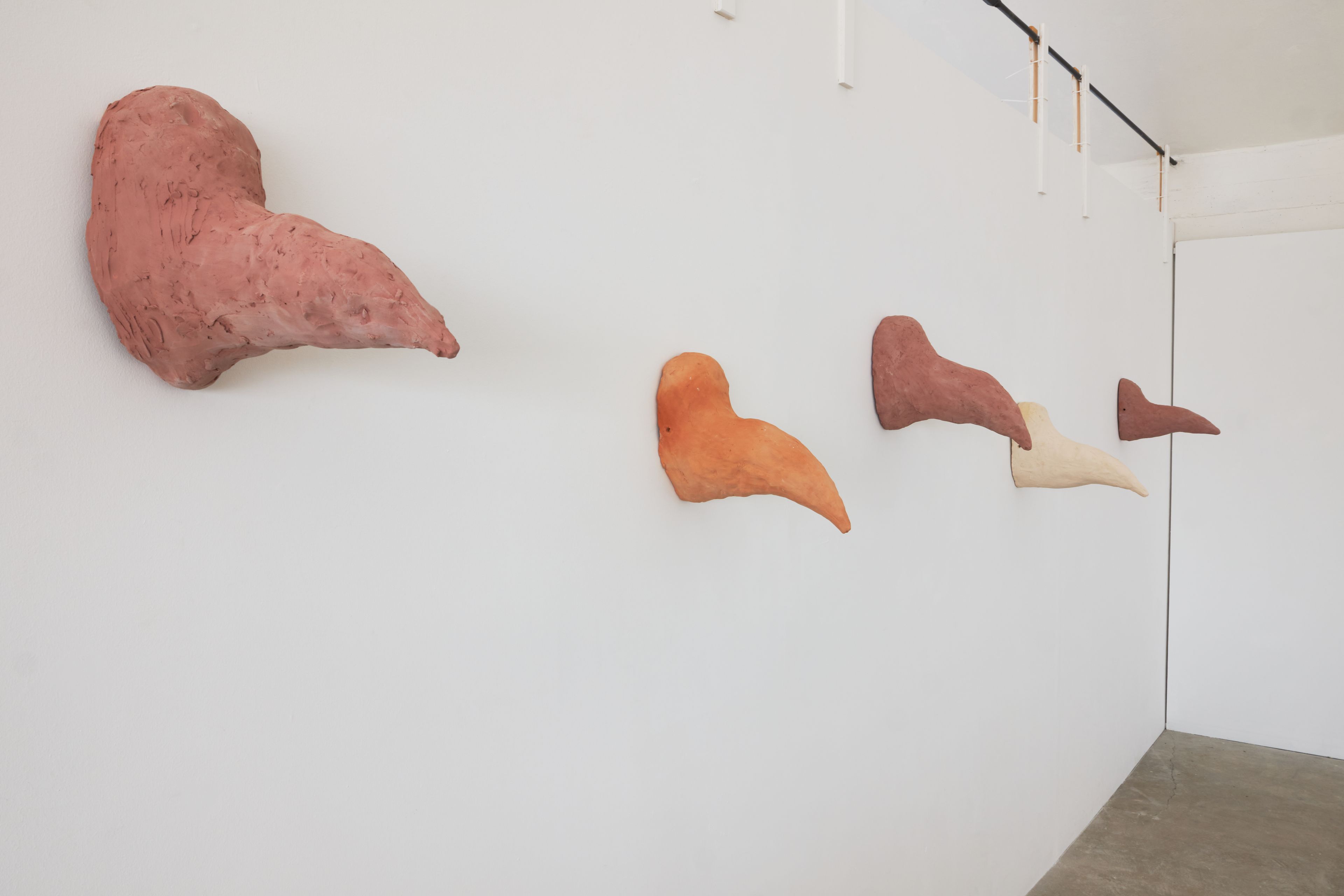
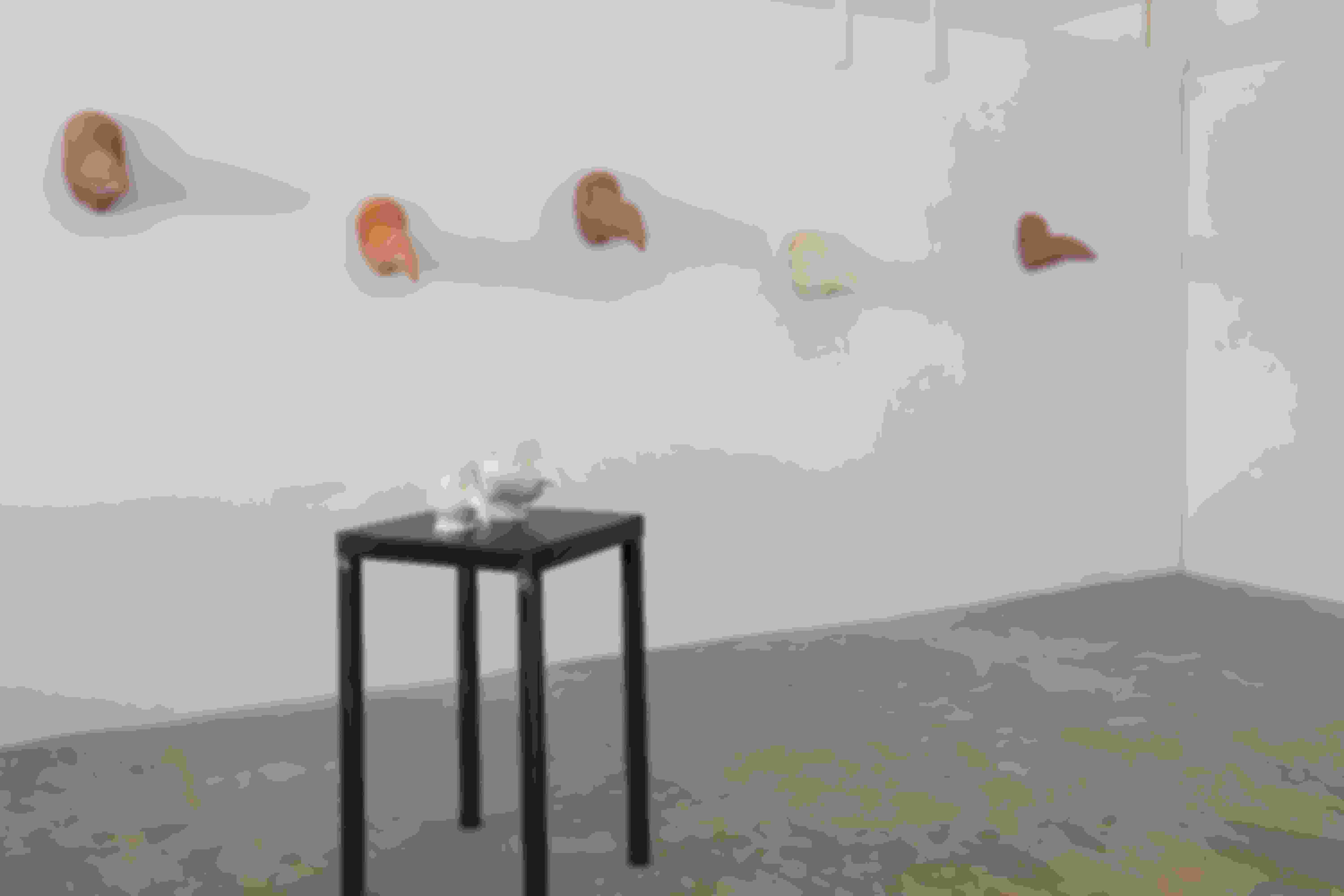
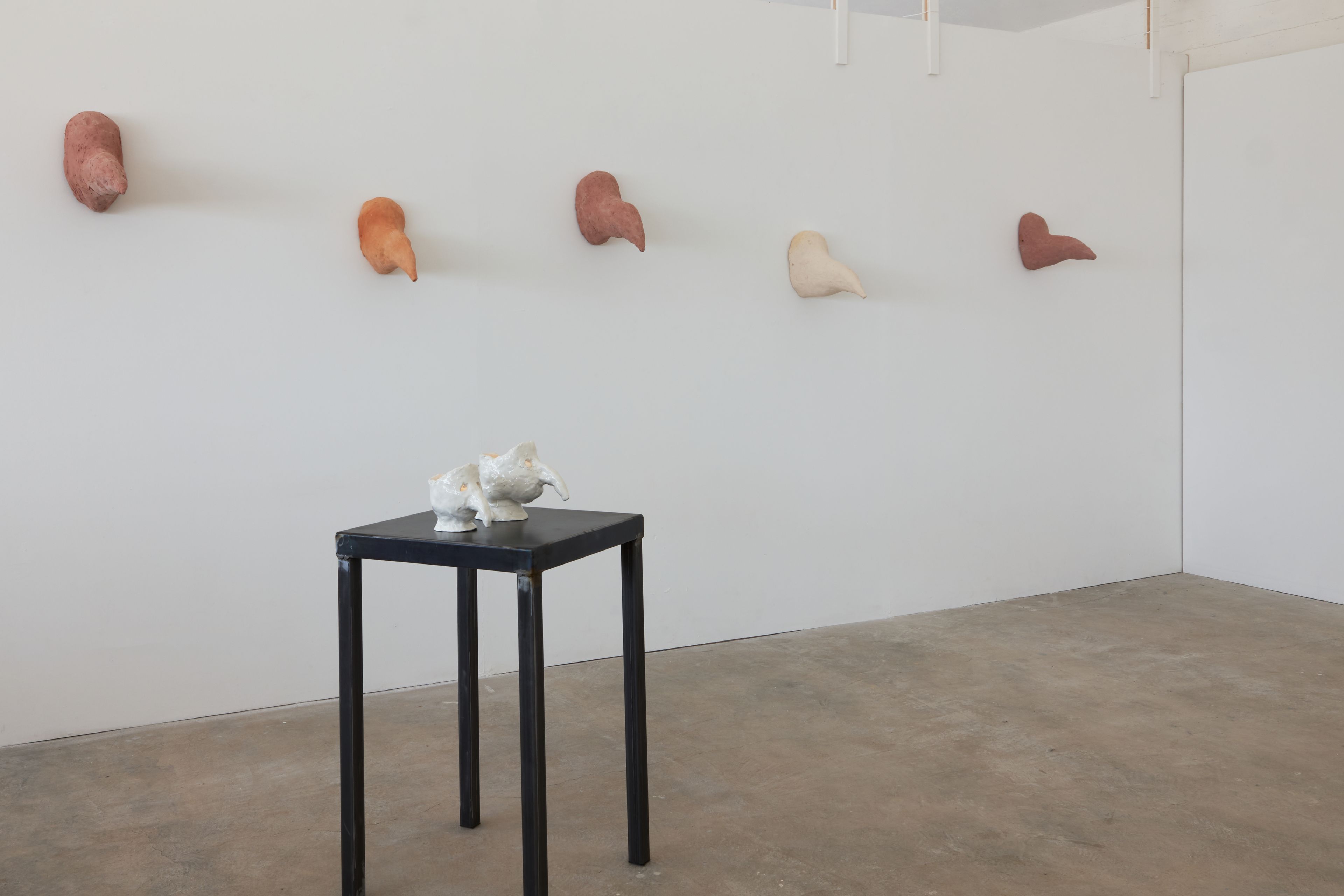
Bella Ciao, 2020
From the 17th century to the middle of the 20th century, thousands of women would flock to northern Italy to work as , weeding the rice paddies of Vercelli, Novara, and Cremona for the forty grueling days of the growing season. Standing in the flooded fields from the break of day until sunset, these migrant workers suffered increasingly poor conditions—paid per day without overtime and working under foremen who stretched the limits of a “day” to nine or ten hour periods.
The experiences of these women are recounted in the Italian folk song “Bella ciao,” which, in the words of historian Diana Garvin, “sings the story of one day and every day in the life of the mondine.” The song charts a mondina’s toil from the sorrowful farewell to her family—evoked repeatedly in the song’s chorus, “O bella ciao, bella ciao, bella ciao, ciao, ciao”—to her arduous labor in the fields under the watchful eye of an overseer who is characterized in terms of sexual violence and authoritarian power (“The overseer with his rod . . . And us bent over at work”). However, as Garvin observes, even as it bemoans the mondina’s separation from family and her long hours of labor, “Bella ciao” reveals the rice fields as a site in which the solitary female body is able to unite with a collective female body. Though the majority of the song is in the first person, the final verse captures the mondina’s realization of her ambitions for a newfound political agency:“But a day will come when all of us will work in liberty!”
In 1906, the mondine began to organize and put their collectivized power to the test, orchestrating a series of work stoppages. “Bella ciao” became one of several protest anthems fueling their efforts to instate an eight-hour workday. Though their strikes were immediately successful—with ramifications that helped temporarily secure the rights of workers across other manual labor industries including metal-working, baking, and gardening—an increasingly conservative political climate would later see this progress revoked. As fascism came to power in Italy, the government attempted to harness the mondine by placing them in the symbolic role of nurturers in political propaganda.
Garvin has written eloquently on the paradoxes built into this portrait of the female working class: There are many different ways to feed the nation: directly, by cooking and serving food, and indirectly, by producing the raw ingredients. . . . This form of doubled feeding of nation and family revealed several awkward contradictions within the Fascist party. First, the social conservatism of the Italian Fascist party claimed that a woman's place was in the home, but strongly supported using a predominantly female labor force in the fields for economic reasons. . . . Second, pronatalist rhetoric celebrated the high fertility of the Italian country women but working in the fields temporarily suspended women's fertility. Not only were they away from men for this period, but the difficult labor conditions suppressed menstruation. . . . What does it mean to be celebrated by the state as a human symbol of ideas that you reject?
As the workers began to see that their struggle was not just with the farmers, but with the government as well, “Bella ciao” expanded in use becoming—between 1943 and 1945—a rallying cry for the anti-fascist resistance.

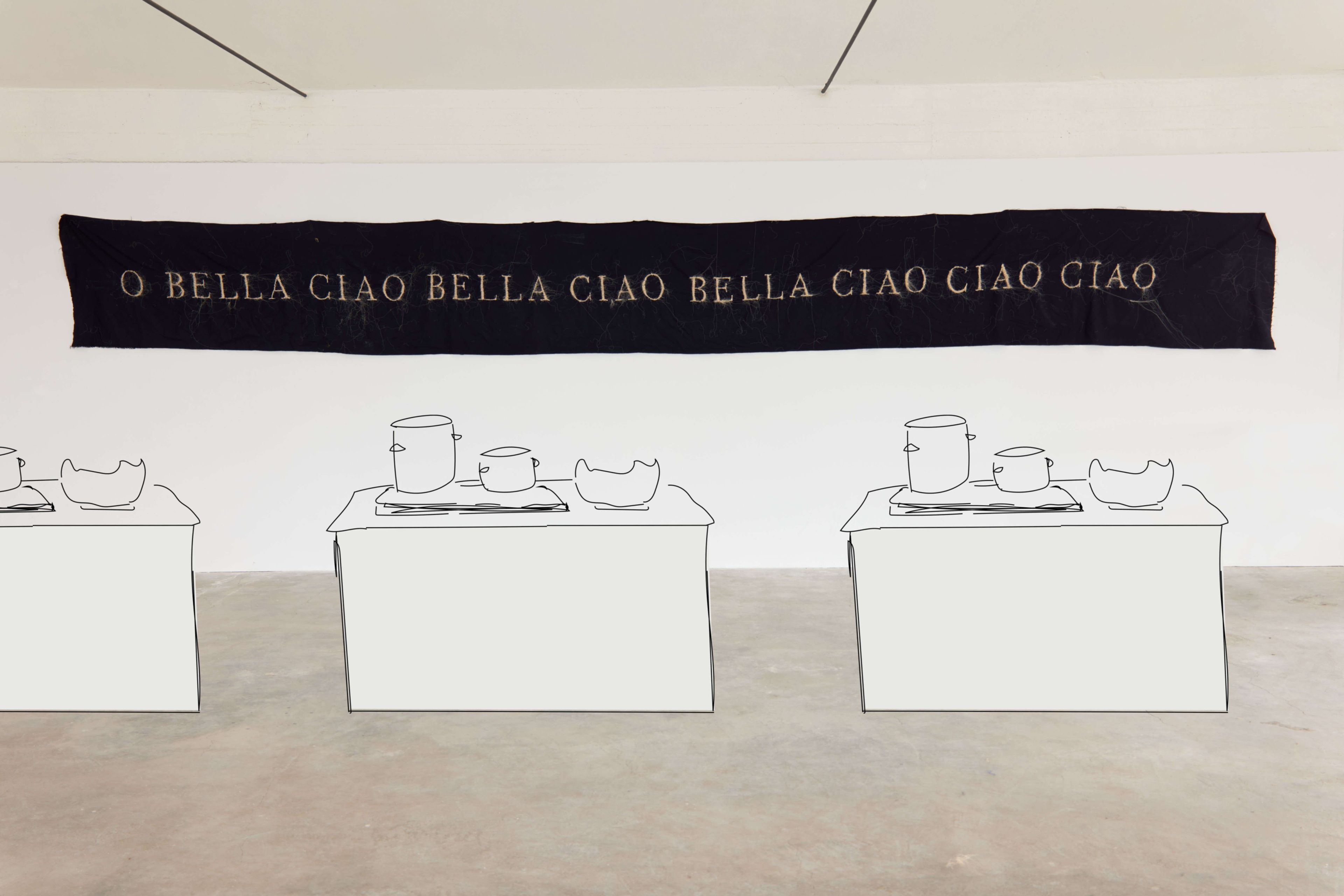
Part installation and part extended activation, this collection draws upon this history of “Bella ciao” as a paean to those who are believed to be powerless—workers struggling against capitalist greed. At the center of the space, a table is laden with platters of risotto, from which a viewer is invited to serve themselves up a plate. Each serving bowl is handmade——and contains a different type of risotto, flavored with seasonal vegetables such as radicchio, mushroom, or asparagus. Behind this centerpiece, invoking laborious modes of production, rice “paintings”—in which to different shades— and hand-stitched banners replicate the haunting chorus of the protest song. While opening this group of works to the embodied experience of a viewer, I also intend for this setting of food to be read in a political light, inviting discussion and the potential for collectivity in a gesture to relational aesthetics that harkens back to my graduate studies with Rirkrit Tiravanija. Though far from a rice paddy, this installation troubles the conventional and apolitical understanding of care.
The lamp made in dedication to the resistance and workers rights, is specifically created using the exterior shell of the plaster mold. Wanting to rebel against the original purpose of the form, the interior of the mold which is made to create the form remains invisible, and I use only the exterior shape to produce a new way of working. I ensure gestures of the fingers are seen during the making of the lamp, the clay is never smoothed out but rather left in a raw and natural manner allowing the viewer to connect to the worker/artist behind this clay form.
Terrazzo, 2021
Studying the colors of the terra, which in Latin literally means ‘earth’. Italy is famous for the rich minerals of its soil, which have been used to pigment works of art for hundreds of years.
Many colors continue to be named for their Italian origins—including Italian Green Umber, Verona Green, Italian Yellow Earth, Ercolano red, Italian Burnt Umber, Italian Raw Sienna, Naples yellow, and Venetian Red.
I draw upon this history of color in small paintings of Venetian terrazzo—a type of flooring made from polished, composite of stone chips and cement, which is crafted from excess materials from other construction projects. These intimate, to-scale paintings reflect upon age-old investments in natural materials and zero waste.
Bodies of Water, 2021
In 2017, more than 884 million people worldwide did not have access to clean drinking water. My own experience with toxic water has made me keenly aware of the preciousness of this resource in spite of its apparent abundance in the United States.
Bodies of Water traces part of the water cycle from icy lakes replenished by snowy mountain runoff to streams as they become rivers and the rivers as they flow out to sea. A series of rocks are stacked and mounted upon a metal fountain spigot affixed to a square base. The series is inspired by the “nasoni”—named for their hooked, nose-like spigots—which are scattered throughout the streets of Rome, providing free drinking water to residents.
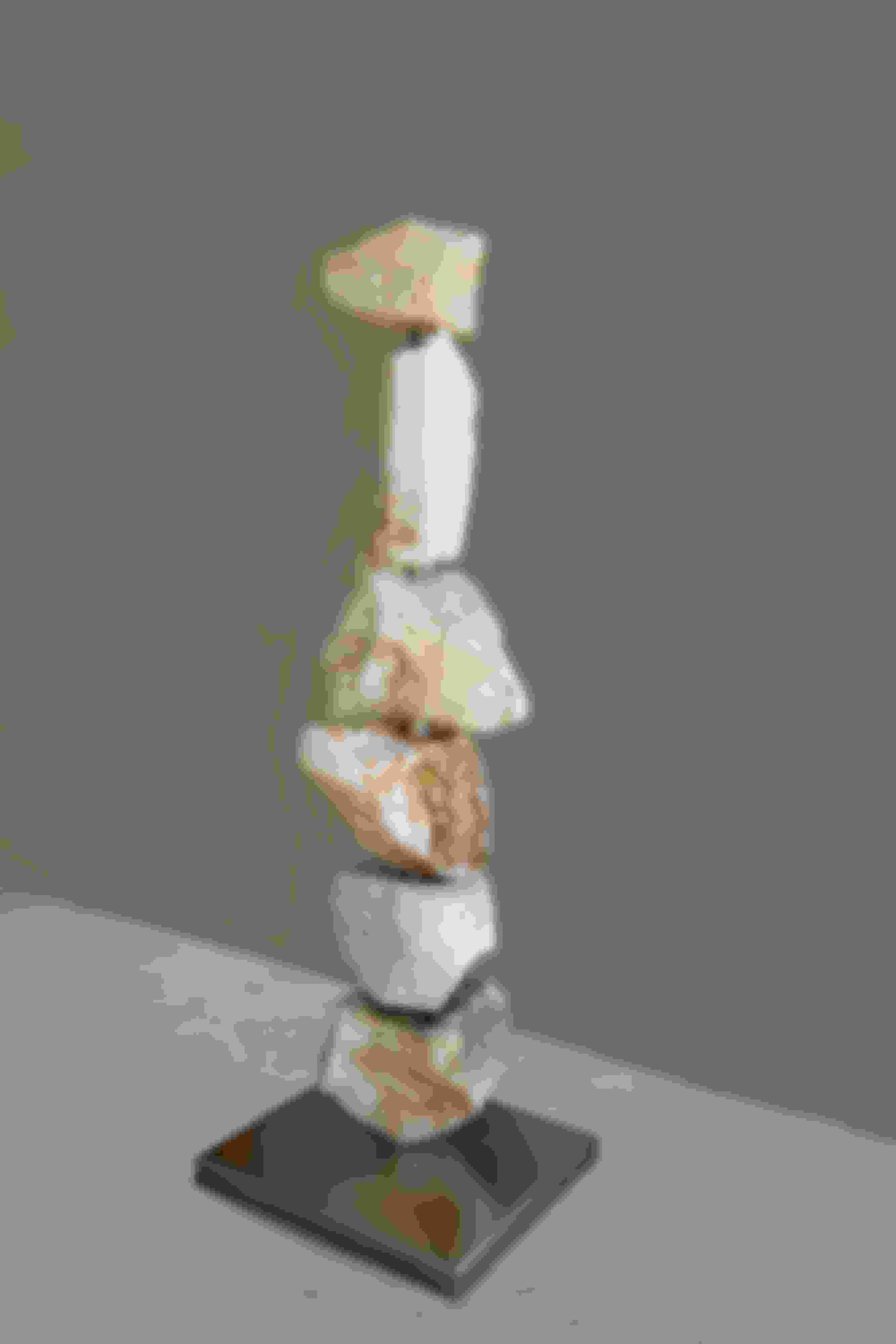
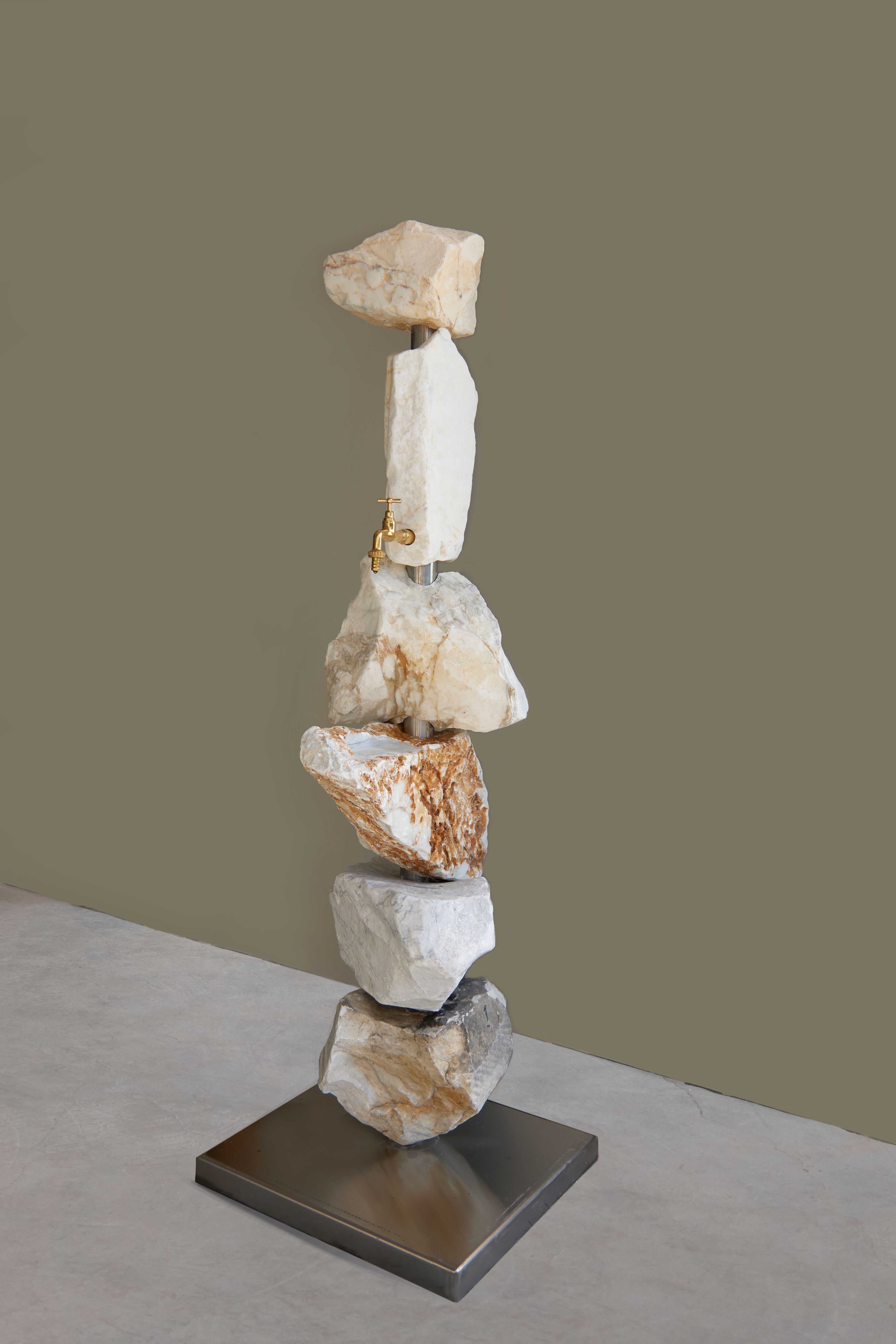
Like this reference point, when my stone fountain is activated, potable water spills from the spigot into the user’s reusable glass or bottle. Installed near Italy’s coastal beaches, this series of water fountains creates a dialogue between different points in the water cycle—river rocks with filtered freshwater and the salty ocean spray—while also providing safe drinking water to local residents. The fountains are accompanied by a series of lamps which are hand-chiseled from semi-translucent stone.
These works also address humankind’s attempt to control or harness the power of water through juxtapositions of the man-made and the natural. The fountain, for example, uses found stones from Carrara which have been artificially ground down and burnished on one side, evoking river rocks naturally polished by the water current, while the other preserves the craggy surface created during the quarrying process.
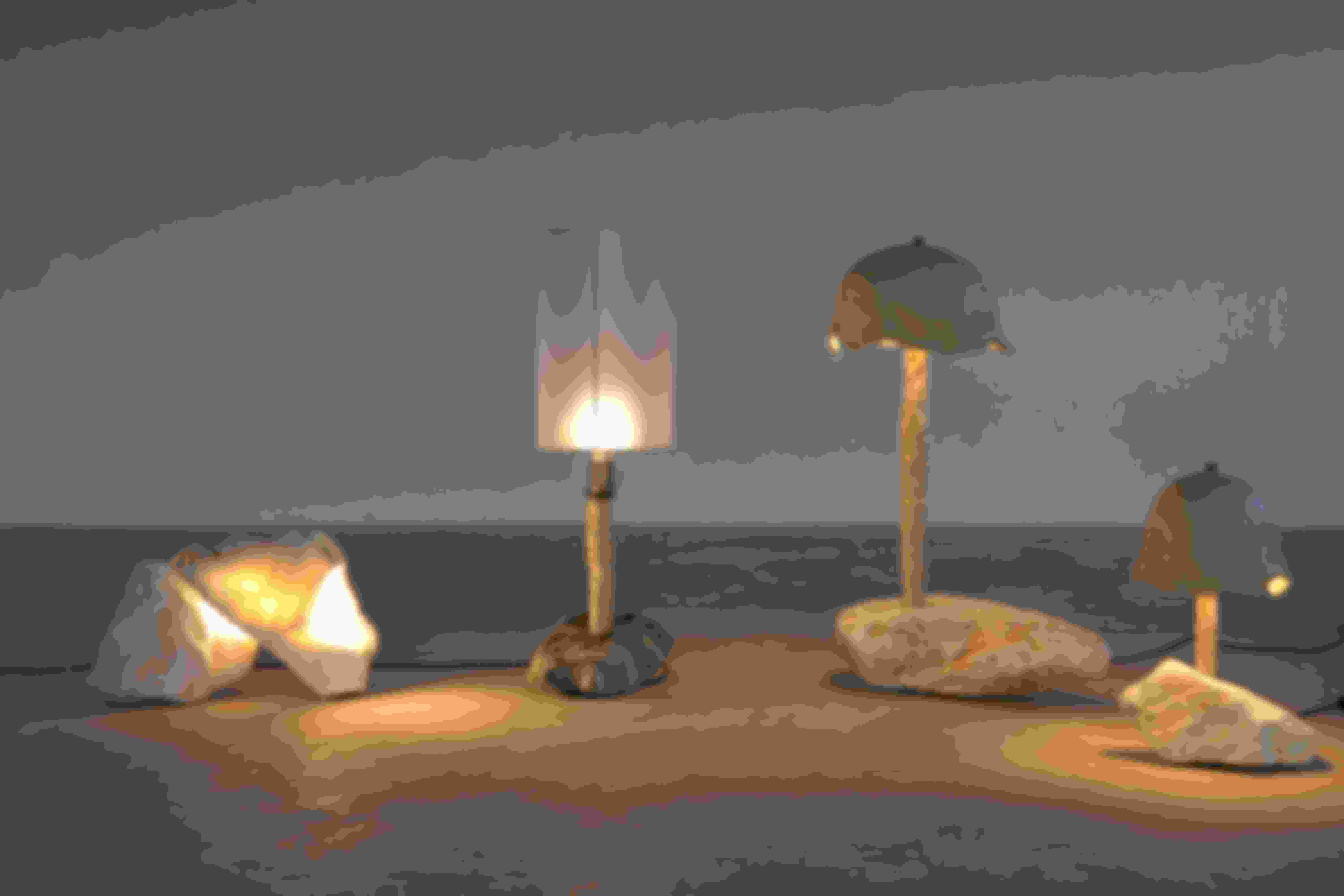
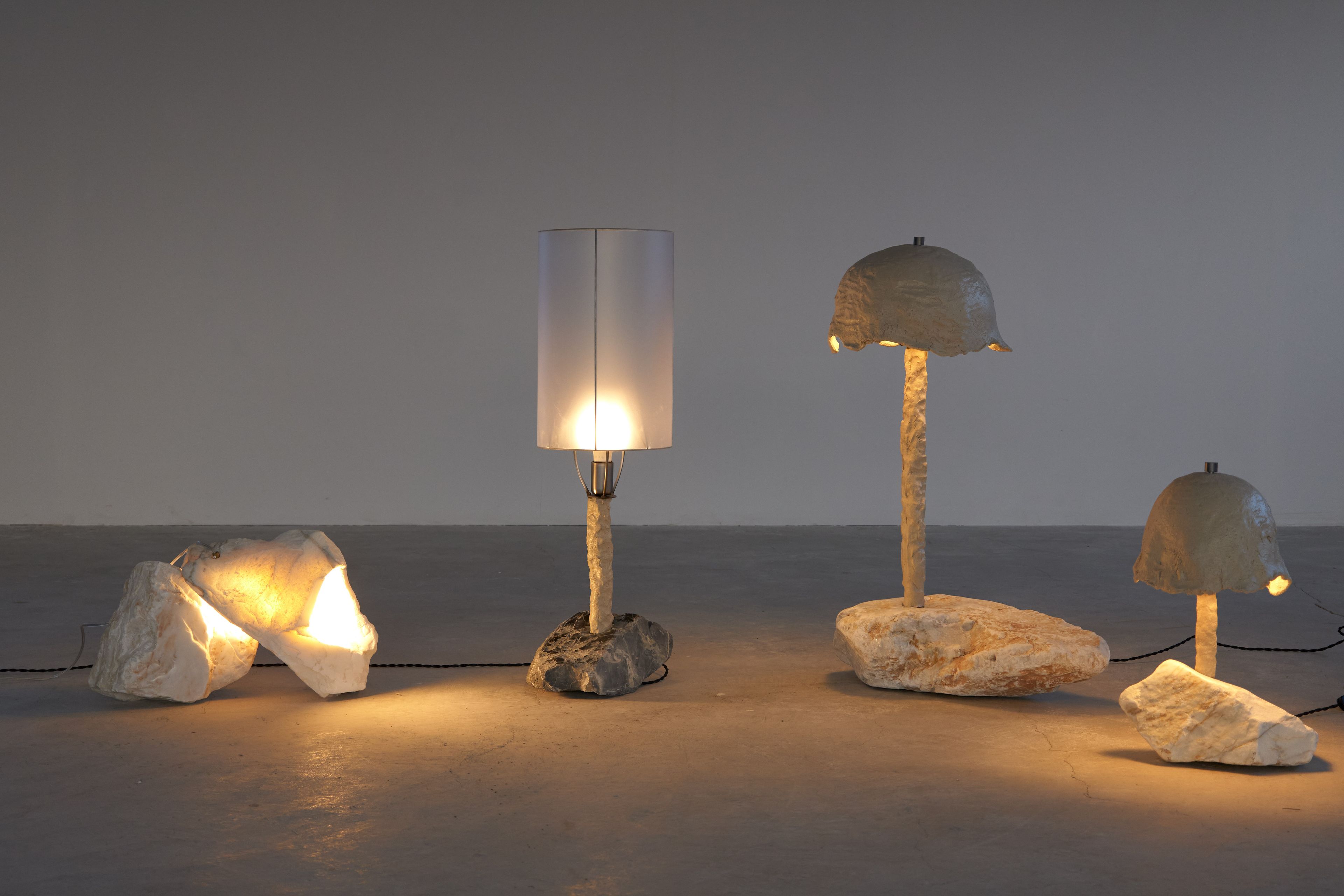
A visual rhyme is made between these smoothed planes of stones and a melted hunk of black and white plastic, which suggests the tons of plastic waste that go un-recycled each year.
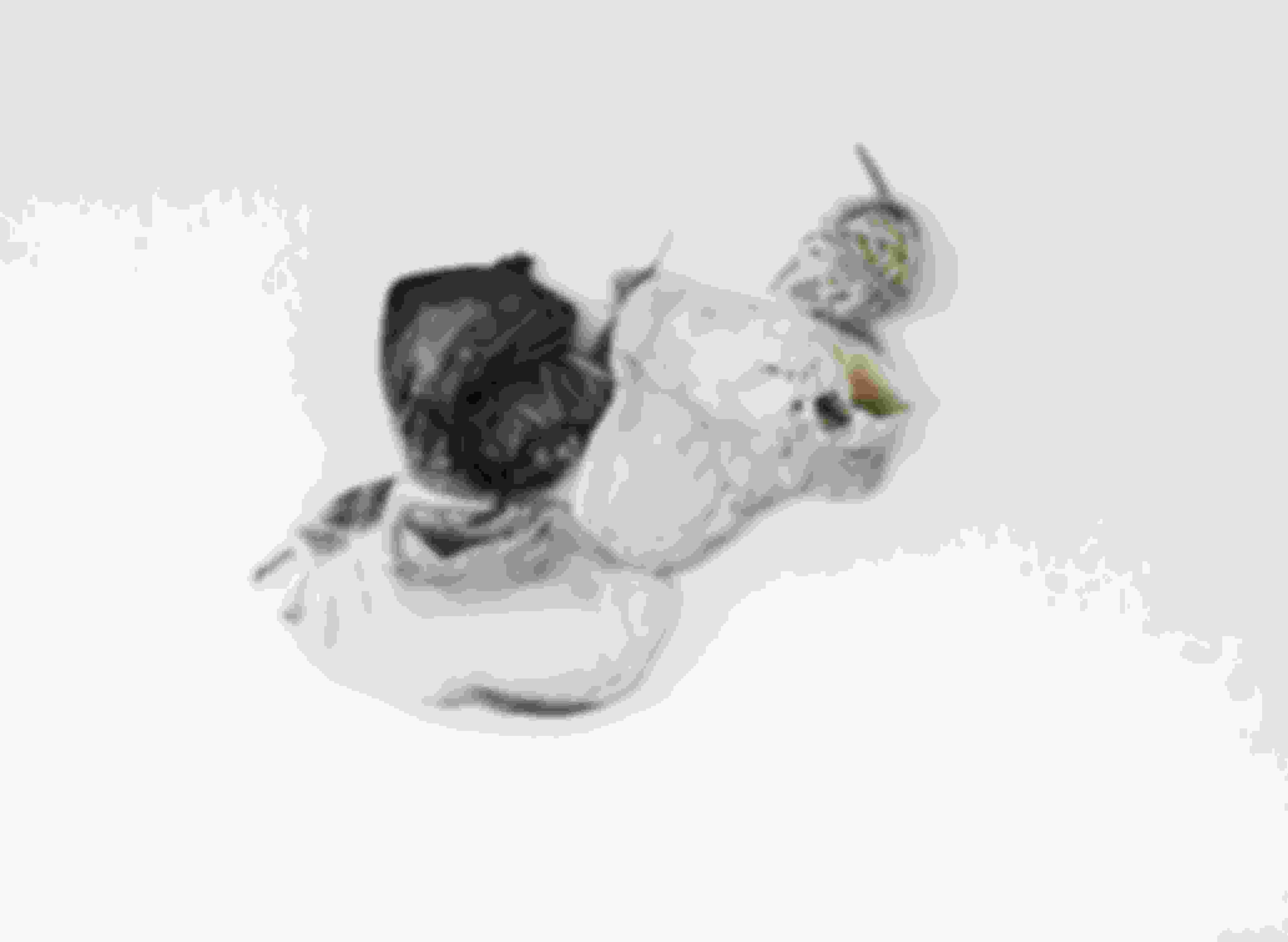
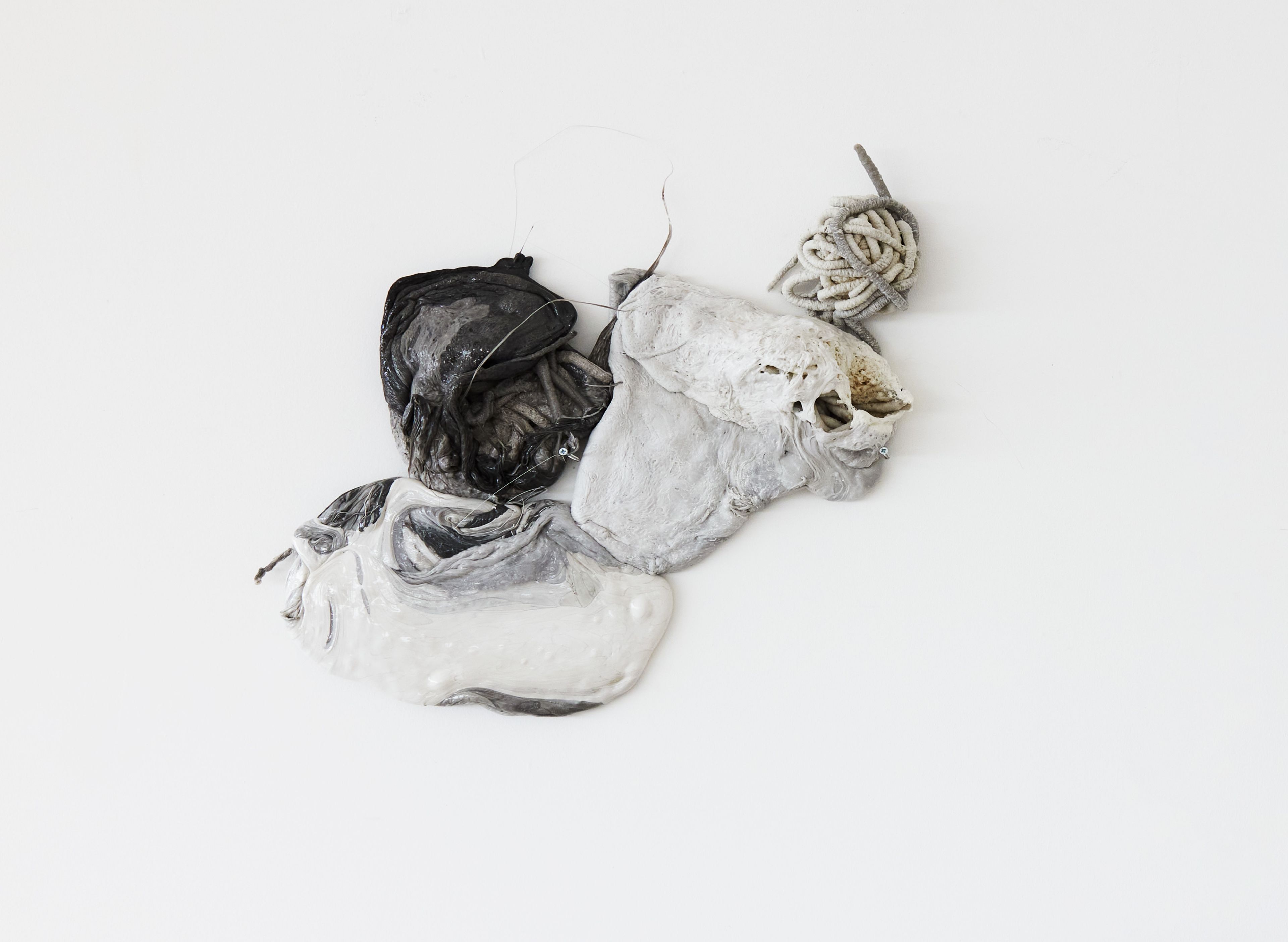
A video and an additional series of photographs emerge from visits to the man-made Lago di Cadore, created in the 1950s with the construction of the Pieve di Cadore hydroelectric dam, as well as to natural lakes and rivers throughout Italy.

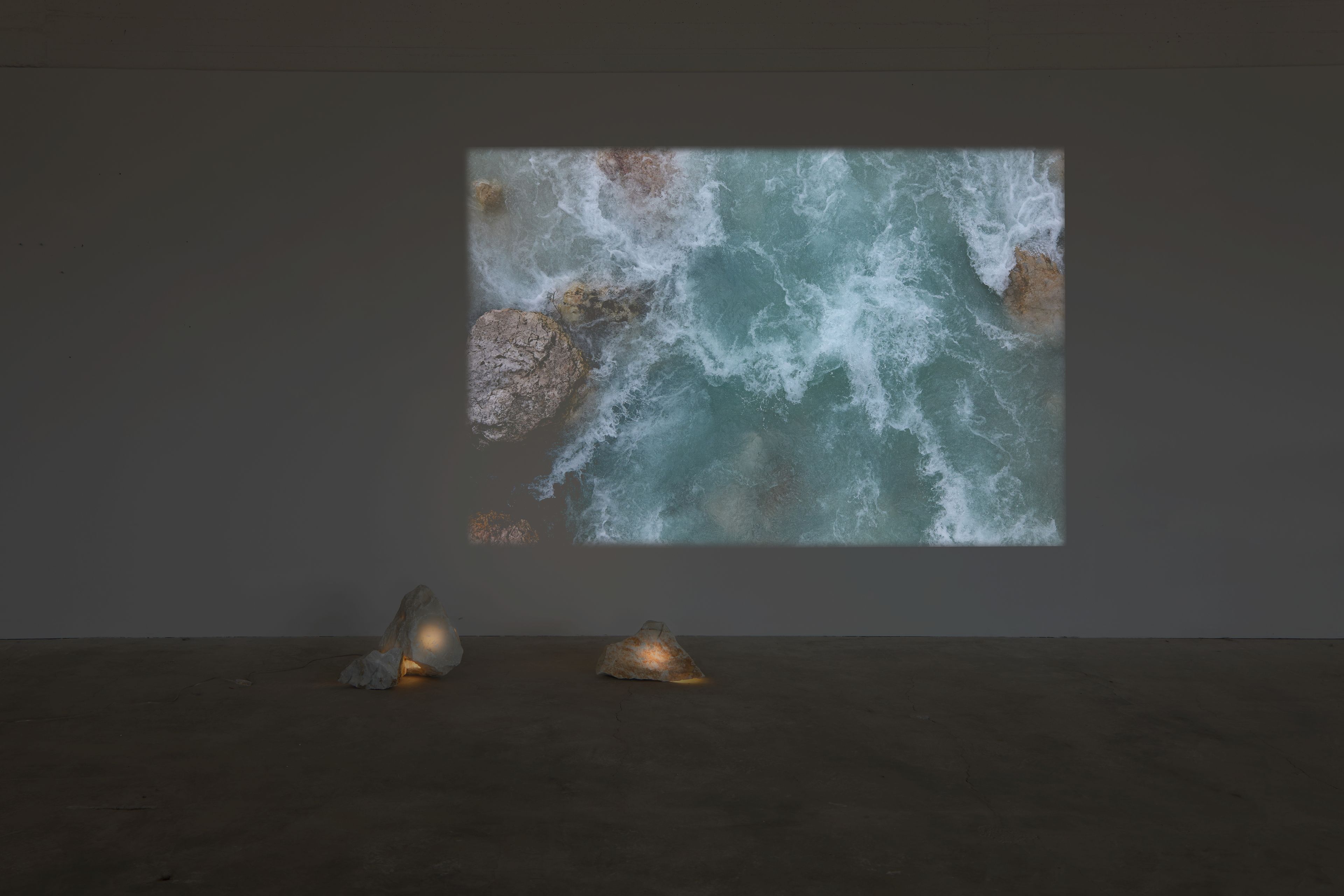
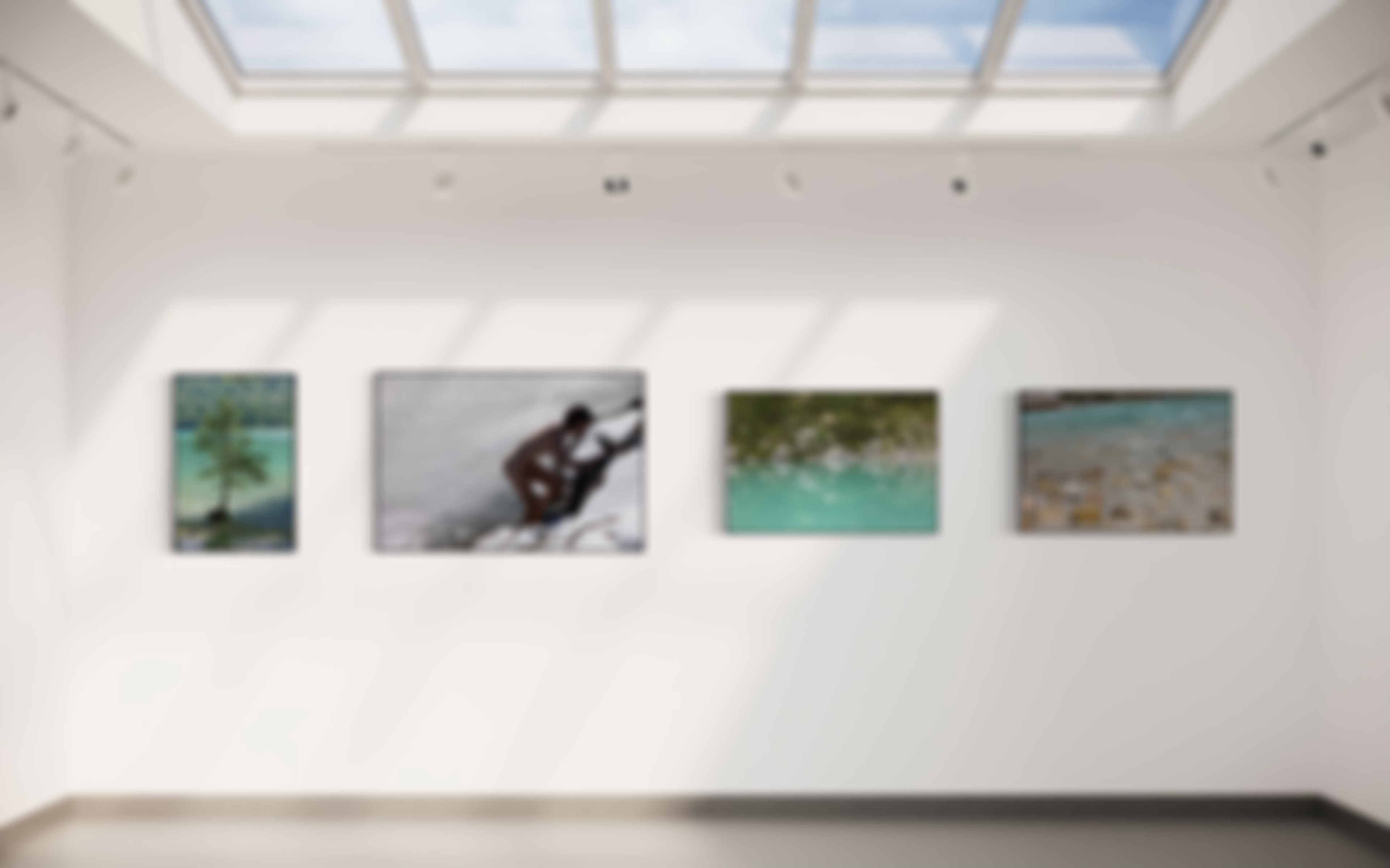
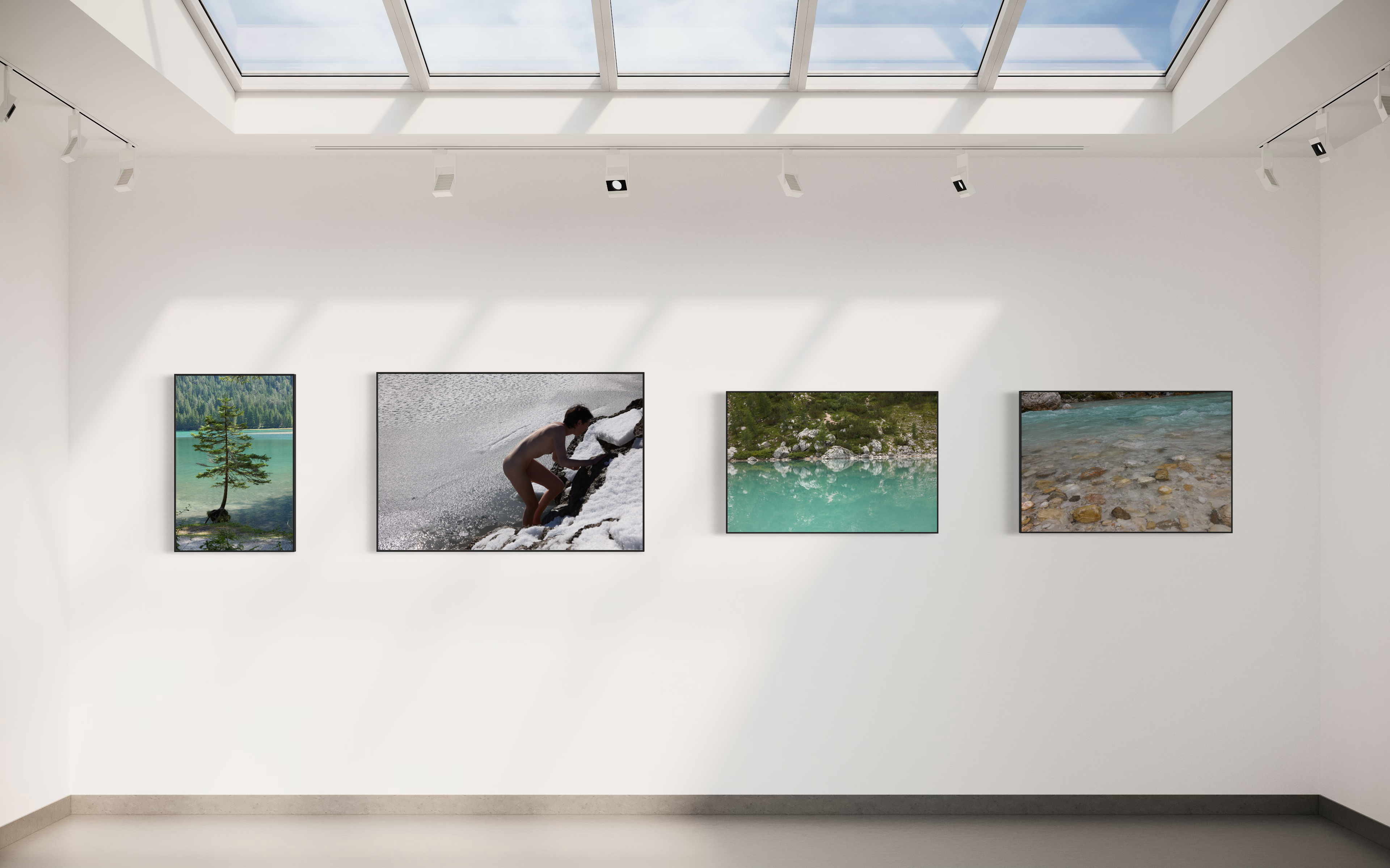
A Likeness, 2020 - 2022
I like to use my art as a tool of action — it is my way of protesting about a cause or speaking on an issue I care deeply about. How can we as humans help other humans? How can I offer my own passions to the collective? What skills can I apply to help the whole? I hope that the project I propose here will represent an effort to think more expansively and generously about our fellow people, and act as a reminder — to myself and others — to fight for better living standards for families around the world.
As I write this, I am sitting in my apartment on via dei Serragli in Florence, in an area called Santo Spirito. It was here where early humanism began with Giovanni Boccacio and where Galileo Galilei practiced and declared his findings of the universe which Today, we can see the ripple effects of these findings. As an artist currently located in Florence, I’m inspired by these great minds and their work for humans across time and space. My new project, titled A Likeness, will be of humans and for humans.
A Likeness examines the idea of family. We are all born into families of varying shapes and sizes and kinds. As we age, our relationship to those families may grow or change. Perhaps our friends become family, or our pets become family. This project will act as a reminder of what family is.
For me, the idea of family has always felt strained. There were many years that I hardly spoke to my family at all. I was the black sheep, and this came with many difficulties, but it also allowed me to grow and to do things in my own way. The absence of my family for some time has made me more attuned to the dynamics inherent in other families.
What I have recognized over the years is that a family is simply two or more beings who take care of one another. And when we stand back — perhaps — we can begin to see that family also constitutes those who live together on this planet we call home.
Living in Santo Spirito in Florence, I can’t help but think about the area’s history and compare it to today. The Santo Spirito church — whose facade is completely bare and thus very modern-looking — sits elegantly and quietly in the piazza, beyond the round stone fountain that slowly trickles water. I spend time sitting by this fountain, gazing at the church, and thinking of what occurred here. This church was the last work of Filippo Brunelleschi, who invented linear perspective and inspired the importance of drawing in Florence. It was in this church where great thinkers such as Boccaccio, Petrarch, and Cosimo Medici discussed early humanism. I believe this moment in history is especially important because the conversations of early humanism took place in a church, yet humanism became a philosophy that puts all religions aside and allows people to connect to each other on the basis of our similarities rather than our differences. Humanists tend to advocate for human rights, free speech, progressive policies, and democracy. To be a good humanist you must be engaged in the world. Part of humanism today is about giving back, helping other humans who may be in need. With A Likeness, I hope to engage in these ideas by spending time with and depicting families of all kinds and contributing a portion of the proceeds to families living in poverty.
Cosimo de Medici’s grandson Lorenzo de Medici made a great change in art by including his family as subjects of representation in his painting, rather than exclusively portraying religious figures and royalty.
Not only did the Medici family affect trends in portraiture, they were also history’s greatest art patrons.
This idea of patronage served as inspiration for A Likeness; I wanted to create a project that allowed collectors to become active collaborators and supporters. By purchasing sketches of their families, participants become art patrons themselves.